NB: This page includes monuments in Canada (British Columbia), East Timor, Indonesia, Laos, Malaysia, Palau, Papua New Guinea, Philippines, Solomon Islands Thailand, Vietnam, and USA (Alaska, Guam, Hawaii & Northern Mariana Islands).
For other Pacific countries, go to Australia, China (including Taiwan), Japan, Latin America, Mexico, New Zealand, Russia, and USA (California, Oregon & Washington).
Click here for special section on four Pacific Rim Parks (in California, China, Mexico & Russia).
| Note a number of Rotary peace monuments below (in British Columbia, Mariana Islands, Philippines, Thailand, etc.).
| Note a number of Japanese peace monuments below (in Alaska, Guam, Iwo Jima, Malaysia, Mariana Islands, Papua New Guinea, Philippines, Solomon Islands, Thailand, etc.)
Click any image to enlarge.




Click here to see
the Phoenix today. | K
E
T
C
H |   1954 - "Phoenix of Hiroshima," North Fork of Mokelumne River, off Tyler Island, Lodi, California (USA?). "John Gardner (phoenixofhiroshima @comcast.net, 209-570-4070) has already rescued the Phoenix after seeing it listed for free on craigslist [in late 2006 or early 2007], its San Francisco owner simply wanting to get rid of it to avoid paying any more fees to the Oyster Point Marina. Gardner paid a San Francisco boater to tow it to its current location." Constructed in Hiroshima (Japan) by American Quaker Earle Reynolds [1910-1998] (top image). "1954 brought the realization of a dream for Reynolds when he, his first wife Barbara Leonard Reynolds [1915-1990], and their three children began an around the world voyage on the Phoenix. They stopped at over one hundred ports, and Earle gave lectures on conditions in Hiroshima. Young Jessica [middle image] documented this trip in her book, which was later published [1958]. When they arrived in Hawaii in 1958, they met the crew of the Golden Rule (qv), Quakers who were on trial for their attempt to sail into the nuclear test zone near Bikini Island to protest nuclear weapons and atmospheric testing. They had been arrested and prevented from completing their mission. After talking with the crew of the Golden Rule, Dr. Reynolds and his family decided to complete the mission in their place. He also believed that the government did not have a right to restrict access to the open ocean. After sailing into the restricted zone, he was arrested and sentenced to two years in prison. This verdict was appealed and eventually overturned." Earle Reynolds founded the Peace Resource Center at the University of California at Santa Cruz (UCSC) in 1975. Barbara Reynolds founded the World Friendship Center in Hiroshima (Japan) in 1965 and the Peace Resource Center at Wilmington College, Ohio, in 1975. 1954 - "Phoenix of Hiroshima," North Fork of Mokelumne River, off Tyler Island, Lodi, California (USA?). "John Gardner (phoenixofhiroshima @comcast.net, 209-570-4070) has already rescued the Phoenix after seeing it listed for free on craigslist [in late 2006 or early 2007], its San Francisco owner simply wanting to get rid of it to avoid paying any more fees to the Oyster Point Marina. Gardner paid a San Francisco boater to tow it to its current location." Constructed in Hiroshima (Japan) by American Quaker Earle Reynolds [1910-1998] (top image). "1954 brought the realization of a dream for Reynolds when he, his first wife Barbara Leonard Reynolds [1915-1990], and their three children began an around the world voyage on the Phoenix. They stopped at over one hundred ports, and Earle gave lectures on conditions in Hiroshima. Young Jessica [middle image] documented this trip in her book, which was later published [1958]. When they arrived in Hawaii in 1958, they met the crew of the Golden Rule (qv), Quakers who were on trial for their attempt to sail into the nuclear test zone near Bikini Island to protest nuclear weapons and atmospheric testing. They had been arrested and prevented from completing their mission. After talking with the crew of the Golden Rule, Dr. Reynolds and his family decided to complete the mission in their place. He also believed that the government did not have a right to restrict access to the open ocean. After sailing into the restricted zone, he was arrested and sentenced to two years in prison. This verdict was appealed and eventually overturned." Earle Reynolds founded the Peace Resource Center at the University of California at Santa Cruz (UCSC) in 1975. Barbara Reynolds founded the World Friendship Center in Hiroshima (Japan) in 1965 and the Peace Resource Center at Wilmington College, Ohio, in 1975. 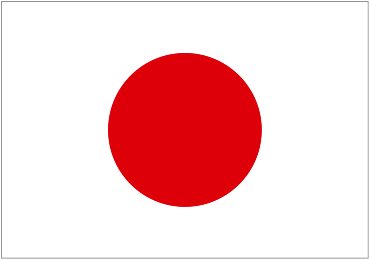
|
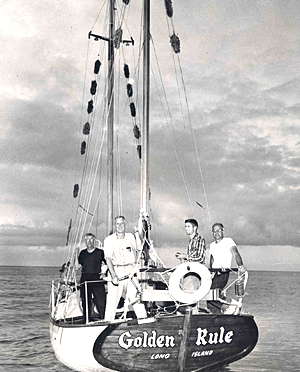
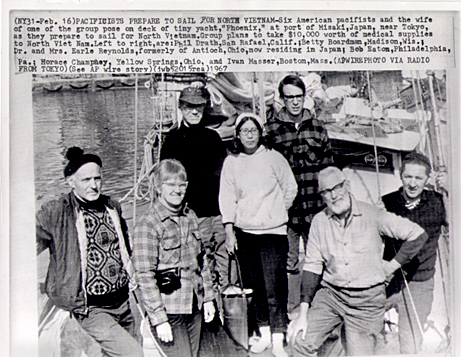


| K
E
T
C
H |   1958? -
"Golden Rule," Eureka, California (USA). Now out of water and for sale by Leon Zerlang (humtug@gmail.com). Asking price is $9,500. Email Jan. 19, 2010 from Wendy E. Chmielewski, PhD, George Cooley Curator,
Swarthmore College Peace Collection, Swarthmore. Pennsylvania (USA): "The sailing ship that in 1958 [Quakers] Albert
Bigelow [1906-1993], James Peck [1914-1993], George Willoughby [1914-2010] (who just passed away two weeks
ago), attempted to sail into the atomic testing grounds near the Marshall
Islands. The ship has been repossessed by Leon Zerlang, the ship yard
owner (from the bankrupt actual owner). Leon is aware of the ship's
history and would like to help save The Golden Rule, but needs ideas and
help on what to do to save this ship. Several years ago I received an
almost identical email from another ship owner trying to save The Phoenix (qv),
a sailing ship with a similar history. I don't know the fate of The
Phoenix. It would be a shame to lose still another piece of peace movement
history. Ideally something like The Golden Rule, a beautiful sailing ship,
should be preserved by the Smithsonian, but I don't know that they have any
interest in it." Right image shows Earle Reynolds [1910-1998], his second wife Akie Nagami, Phil Drath, Betty Boardman, Bob Eaton, Horace Champhy, and Ivan Massar embarking from Misaki, Kanagawa (Japan) on February 16, 1967, en route to North Vietnam with medical supplies. "In 1959, Bigelow published a book, "Voyage of the Golden Rule: An Experiment with Truth," which documented his journey. The story would go on to inspire fellow Quaker Marie Bohlen to suggest the use of a similar tactic to members of the Vancouver-based Don't Make a Wave Committee (later to become Greenpeace) in 1970." 1958? -
"Golden Rule," Eureka, California (USA). Now out of water and for sale by Leon Zerlang (humtug@gmail.com). Asking price is $9,500. Email Jan. 19, 2010 from Wendy E. Chmielewski, PhD, George Cooley Curator,
Swarthmore College Peace Collection, Swarthmore. Pennsylvania (USA): "The sailing ship that in 1958 [Quakers] Albert
Bigelow [1906-1993], James Peck [1914-1993], George Willoughby [1914-2010] (who just passed away two weeks
ago), attempted to sail into the atomic testing grounds near the Marshall
Islands. The ship has been repossessed by Leon Zerlang, the ship yard
owner (from the bankrupt actual owner). Leon is aware of the ship's
history and would like to help save The Golden Rule, but needs ideas and
help on what to do to save this ship. Several years ago I received an
almost identical email from another ship owner trying to save The Phoenix (qv),
a sailing ship with a similar history. I don't know the fate of The
Phoenix. It would be a shame to lose still another piece of peace movement
history. Ideally something like The Golden Rule, a beautiful sailing ship,
should be preserved by the Smithsonian, but I don't know that they have any
interest in it." Right image shows Earle Reynolds [1910-1998], his second wife Akie Nagami, Phil Drath, Betty Boardman, Bob Eaton, Horace Champhy, and Ivan Massar embarking from Misaki, Kanagawa (Japan) on February 16, 1967, en route to North Vietnam with medical supplies. "In 1959, Bigelow published a book, "Voyage of the Golden Rule: An Experiment with Truth," which documented his journey. The story would go on to inspire fellow Quaker Marie Bohlen to suggest the use of a similar tactic to members of the Vancouver-based Don't Make a Wave Committee (later to become Greenpeace) in 1970."
|
 | 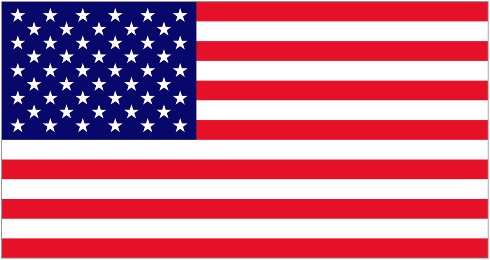  July 4, 1982 - "Behold the Sea," Mendocino, California (USA). Sister city plaque for Mendocino & Miasa, Nagano (Japan). "At the tip of the peninsula." Sister city "relationship formed in 1980 due to the friendship of Mendocino artist Bill Zacha & Japanese artist Toshi Yoshida." Inscription (in Japanese & English): "The citizens of the sister cities of Mendocino and Miasa, Japan dedicate this plaque to the peaceful pursuits of the peoples of the Pacific Basin and to the protection of its environment that all living things there-in may exist in perpetual harmony." Information courtesy of Jill Hoyles 26Apr2015. July 4, 1982 - "Behold the Sea," Mendocino, California (USA). Sister city plaque for Mendocino & Miasa, Nagano (Japan). "At the tip of the peninsula." Sister city "relationship formed in 1980 due to the friendship of Mendocino artist Bill Zacha & Japanese artist Toshi Yoshida." Inscription (in Japanese & English): "The citizens of the sister cities of Mendocino and Miasa, Japan dedicate this plaque to the peaceful pursuits of the peoples of the Pacific Basin and to the protection of its environment that all living things there-in may exist in perpetual harmony." Information courtesy of Jill Hoyles 26Apr2015. 
|
Alaska (USA)
Right click image to enlarge.
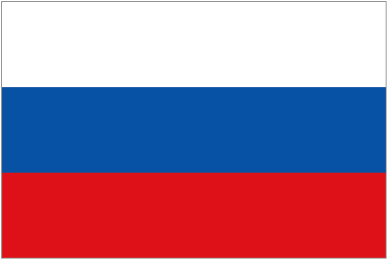


|
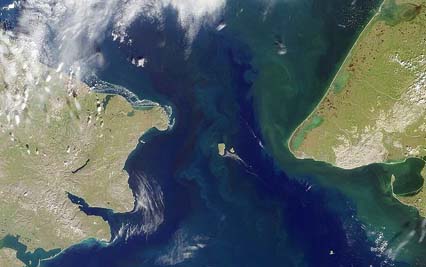
|
 


|
1986-1991 - Arctic Arc,
Cape Dezhnev, Naukan (Russia) & Cape Prince of Wales, Wales, Alaska (USA).
A joint project by Michigan sculptor David Barr and Alaskan artist Joe Senungetuk. Two "sculpture installations" evoking a bird, a boat, and a hand extended in friendship. About 60 miles (97 km) apart on each side of the Bering Sea at sites of the first human migrations into North America. According to Barr, "the two sculptures are a peaceful symbol for a border of international tension."
|


|   1987 - Japanese Peace Monument, Attu Island, Aleutian Islands, Alaska (USA). Erected by Japan at site of only battle on US soil during World War II. 1987 - Japanese Peace Monument, Attu Island, Aleutian Islands, Alaska (USA). Erected by Japan at site of only battle on US soil during World War II. 
|
Australia
Click here for Australia & New Zealand webpage.
British Columbia (Canada)
Right click image to enlarge.
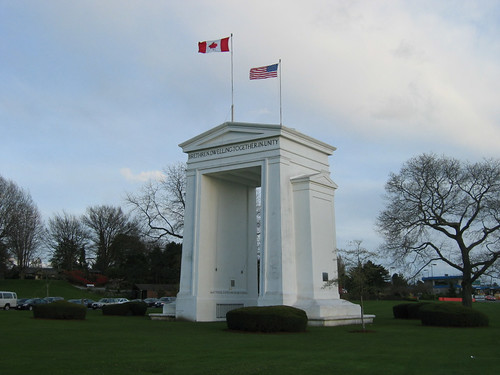


|   September 6, 1921 - International Peace Arch,
Peace Arch Park, US/Canadian Border, Blaine, Washington (USA), & Douglas, British Columbia (Canada). On major highway & railroad between Seattle & Vancouver. Commemorates the centennial
of the Treaty of Ghent which ended the War
of 1812 between the US & Great Britain. Built by road builder Sam Hill [1857-1931]. Click here for the Wikipedia article. 1 of 40 monuments in "Peace Symbols" by Zonia Baber (1948), pp. 60-61. Entry #1211 in the "Peace Movement Directory" by James Richard Bennett (2001). September 6, 1921 - International Peace Arch,
Peace Arch Park, US/Canadian Border, Blaine, Washington (USA), & Douglas, British Columbia (Canada). On major highway & railroad between Seattle & Vancouver. Commemorates the centennial
of the Treaty of Ghent which ended the War
of 1812 between the US & Great Britain. Built by road builder Sam Hill [1857-1931]. Click here for the Wikipedia article. 1 of 40 monuments in "Peace Symbols" by Zonia Baber (1948), pp. 60-61. Entry #1211 in the "Peace Movement Directory" by James Richard Bennett (2001).
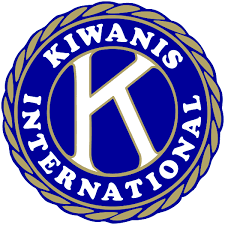 A Kiwanis marker will be added to this site in 1936 [qv] & supplemented with a second marker in 1965 [qv]. A Kiwanis marker will be added to this site in 1936 [qv] & supplemented with a second marker in 1965 [qv].
|
 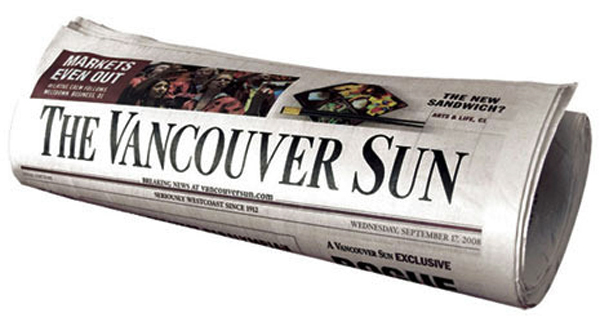
|   May 9, 1924 - Painting of President Harding in Stanley Park, Washington, DC (USA) - "Warren Gamaliel Harding doesn't get much respect these days.
It's a far cry from the day Harding came to Vancouver on July 26, 1923 [and] 30,000 to 40,000 people heard [him] speak in Stanley Park...
The president was reported to be in a 'good humoured mood' at dinner before he left the city to board the USS Henderson & sail to Tacoma. His mood may have darkened when the Henderson ran into another ship about 8 a.m. the next morning in a foggy Puget Sound. Or he may not have noticed, because he had already fallen deathly ill...
Vancouverites were shocked at the news [of his death]. The Kiwanis Club put up the funds for a Harding memorial by [Vancouver] sculptor Charles Marega [1871-1939], which was unveiled in Stanley Park on Sept. 16, 1925.
But the Vancouver Sun had scooped the Kiwanis Club by commissioning its own memorial painting a year earlier. Publisher Robert Cromie paid 'the Remington of the Canadian West,' John Innes [1863-1941], the princely sum of $1,000 to come up with an epic vision of Harding beguiling the masses in Stanley Park. It's a fairly romantic scene - Harding extends his arms 'in fraternal greeting' to the crowd, surrounded by a lush green forest...
The painting was presented to the National Press Club in Washington on May 9, 1924, and was accepted on behalf of the United States by Harding's successor, Calvin Coolidge...
[It] was passed on to the US National Museum, which had it on display until 1958, when it went into storage....
Harding memorabilia doesn't have much demand these days, because a series of scandals after Harding's death took a heavy toll on his reputation..." May 9, 1924 - Painting of President Harding in Stanley Park, Washington, DC (USA) - "Warren Gamaliel Harding doesn't get much respect these days.
It's a far cry from the day Harding came to Vancouver on July 26, 1923 [and] 30,000 to 40,000 people heard [him] speak in Stanley Park...
The president was reported to be in a 'good humoured mood' at dinner before he left the city to board the USS Henderson & sail to Tacoma. His mood may have darkened when the Henderson ran into another ship about 8 a.m. the next morning in a foggy Puget Sound. Or he may not have noticed, because he had already fallen deathly ill...
Vancouverites were shocked at the news [of his death]. The Kiwanis Club put up the funds for a Harding memorial by [Vancouver] sculptor Charles Marega [1871-1939], which was unveiled in Stanley Park on Sept. 16, 1925.
But the Vancouver Sun had scooped the Kiwanis Club by commissioning its own memorial painting a year earlier. Publisher Robert Cromie paid 'the Remington of the Canadian West,' John Innes [1863-1941], the princely sum of $1,000 to come up with an epic vision of Harding beguiling the masses in Stanley Park. It's a fairly romantic scene - Harding extends his arms 'in fraternal greeting' to the crowd, surrounded by a lush green forest...
The painting was presented to the National Press Club in Washington on May 9, 1924, and was accepted on behalf of the United States by Harding's successor, Calvin Coolidge...
[It] was passed on to the US National Museum, which had it on display until 1958, when it went into storage....
Harding memorabilia doesn't have much demand these days, because a series of scandals after Harding's death took a heavy toll on his reputation..."
|




|  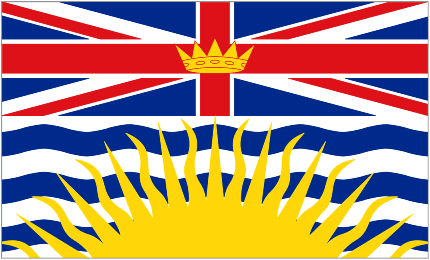 September 16, 1925 - Harding International Good Will Memorial, Stanley Park, Vancouver, British Columbia (Canada).
"More than 12,000 people gathered...to dedicate a memorial to former US President & Marion, Ohio, Kiwanian Warren G. Harding. But rather than dwell on the president’s unexpected death, the monument also celebrated the goodwill that exists between Kiwanis’ two founding nations.
Two bronze figures, representing the USA & Canada, stand on the memorial, each holding an olive branch of peace. Beside them is a plaque that quotes Harding’s 1923 speech. /// "The Kiwanis Club initiated a drive for a grand memorial to Harding in Stanley Park, at the site where he spoke [in 1923]. The monument was designed by Vancouver sculptor Charles Marega (also a Kiwanian)." /// US President Warren G. Harding [1865-1923] died not long after visiting Vancouver to dedicate this monument. Click here for YouTube video. 1 of 40 monuments in "Peace Symbols" by Zonia Baber (1948), pp. 64-65. Entry #1241 in the "Peace Movement Directory" by James Richard Bennett (2001). September 16, 1925 - Harding International Good Will Memorial, Stanley Park, Vancouver, British Columbia (Canada).
"More than 12,000 people gathered...to dedicate a memorial to former US President & Marion, Ohio, Kiwanian Warren G. Harding. But rather than dwell on the president’s unexpected death, the monument also celebrated the goodwill that exists between Kiwanis’ two founding nations.
Two bronze figures, representing the USA & Canada, stand on the memorial, each holding an olive branch of peace. Beside them is a plaque that quotes Harding’s 1923 speech. /// "The Kiwanis Club initiated a drive for a grand memorial to Harding in Stanley Park, at the site where he spoke [in 1923]. The monument was designed by Vancouver sculptor Charles Marega (also a Kiwanian)." /// US President Warren G. Harding [1865-1923] died not long after visiting Vancouver to dedicate this monument. Click here for YouTube video. 1 of 40 monuments in "Peace Symbols" by Zonia Baber (1948), pp. 64-65. Entry #1241 in the "Peace Movement Directory" by James Richard Bennett (2001). 
|

|   November 11, 1928 - Canadian Memorial Chapel (United Church & Centre for Peace), 1806 West 15th Avenue, Central Vancouver, British Columbia (Canada). "The inspiration of Rev George Fallis, a chaplain during [World War I], who also raised most of the money for the building & was minister until 1933. It features a set of 10 stained-glass windows, one for each of the 9 provinces (Newfoundland was not yet a part of the federation) & the Yukon." /// "Join us for music, memories, and reflection in our unique chapel built for peace in honour of those who gave their lives in [World War I]. View the only copies of the [seven] Books of Remembrance outside of Ottawa and perhaps find family members who gave their lives in hope of peace. Reflect with wonderful instrumentalists as musical accompaniment in this sanctuary for peace. All welcome, all free, refreshments served." November 11, 1928 - Canadian Memorial Chapel (United Church & Centre for Peace), 1806 West 15th Avenue, Central Vancouver, British Columbia (Canada). "The inspiration of Rev George Fallis, a chaplain during [World War I], who also raised most of the money for the building & was minister until 1933. It features a set of 10 stained-glass windows, one for each of the 9 provinces (Newfoundland was not yet a part of the federation) & the Yukon." /// "Join us for music, memories, and reflection in our unique chapel built for peace in honour of those who gave their lives in [World War I]. View the only copies of the [seven] Books of Remembrance outside of Ottawa and perhaps find family members who gave their lives in hope of peace. Reflect with wonderful instrumentalists as musical accompaniment in this sanctuary for peace. All welcome, all free, refreshments served."
|
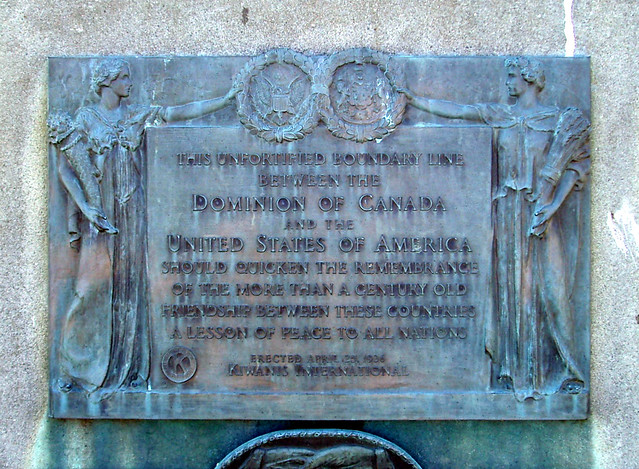
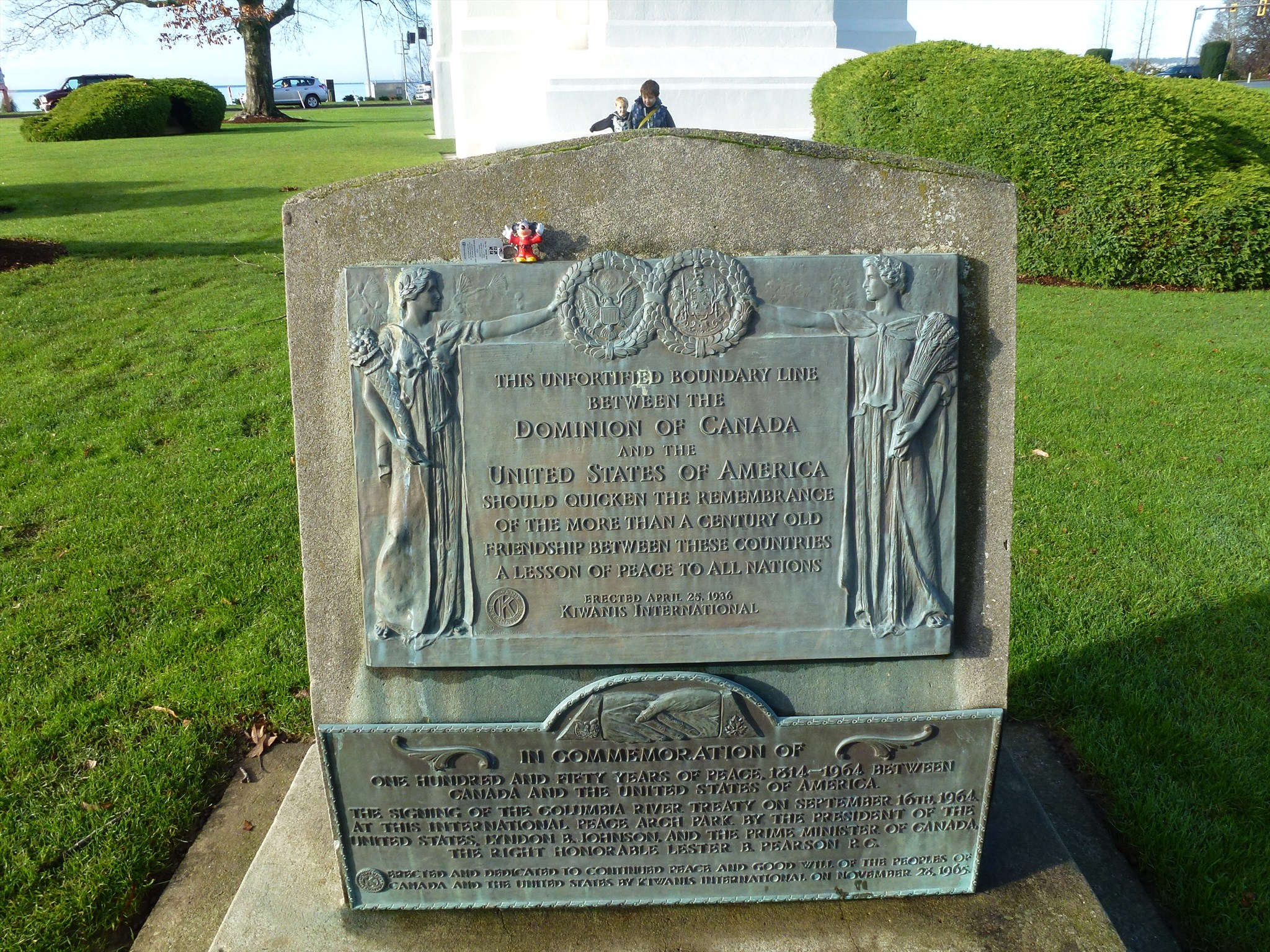


 |
  April 25, 1936 - Kiwanis Peace Plaque, adjacent to Peace Arch, directly on border, between Blaine, Washington (USA) & Surrey, British Columbia (Canada). 1 of 13 named by Baber after Ambassdor Bridge. 1 of 13 in Entry #1207 "Peace Movement Directory" by Bennett (2001). /// "United Divide: A Linear Portrait of the USA/Canada Border" says "There are monuments and plaques of all kinds [at this site]. Some discuss historical points about the boundary, others simply commemorate commemoration... The local Kiwanis Club monument, commonly found at crossings, dated 1936, and saying 'This unfortified boundary line between the Dominion of Canada and the United States of America should quicken the remembrance of the more than century old friendship between these countries a lesson peace to all nations.'" /// Note lower plaque added November 28, 1965. /// Marker visible in air view just to left of the Peace Arch. April 25, 1936 - Kiwanis Peace Plaque, adjacent to Peace Arch, directly on border, between Blaine, Washington (USA) & Surrey, British Columbia (Canada). 1 of 13 named by Baber after Ambassdor Bridge. 1 of 13 in Entry #1207 "Peace Movement Directory" by Bennett (2001). /// "United Divide: A Linear Portrait of the USA/Canada Border" says "There are monuments and plaques of all kinds [at this site]. Some discuss historical points about the boundary, others simply commemorate commemoration... The local Kiwanis Club monument, commonly found at crossings, dated 1936, and saying 'This unfortified boundary line between the Dominion of Canada and the United States of America should quicken the remembrance of the more than century old friendship between these countries a lesson peace to all nations.'" /// Note lower plaque added November 28, 1965. /// Marker visible in air view just to left of the Peace Arch.
|





 |
  Date? - Kiwanis Peace Monument & Plaque, at border crossing on Highway 31 between Nelway, British Columbia (Canada) & Metaline Falls, Washington (USA).
"United Divide: A Linear Portrait of the USA/Canada Border" says "The first of 13 official road crossings in Washington. The border comes over a cliff from the east, and drops across the crossing. It passes through the Kiwanis club plaque, a common feature of the border, and through the International Boundary Commission (IBC) monuments..." /// Location of undated upper left image from IUPUI archives not determined, but it names sponsoring clubs in NE Washington state & bears this caption: "Kiwanis officials stand by a U.S.-Canada Peace Marker erected by various clubs of the Pacific Northwest District. Pictured (left to right) are: Pacific Northwest District Governor J. N. Emerson, International Trustee R. George McCuish, Tablet Committee Chairman Dr. E. N. Dayton, Table Committee Member Dan Droz, Division Six Lieutenant Governor Oscar W. Nelson, and Past International Trustee A. H. Synison." /// Undated upper right image is from Washington State Library; caption says "Pickup truck under the canopy of the Canadian Nelway border crossing station. A monument is visible on the right side of the photograph." /// Lower left image is blown up from lower right image; Kiwanis monument is directly behind the IBC monument. Date? - Kiwanis Peace Monument & Plaque, at border crossing on Highway 31 between Nelway, British Columbia (Canada) & Metaline Falls, Washington (USA).
"United Divide: A Linear Portrait of the USA/Canada Border" says "The first of 13 official road crossings in Washington. The border comes over a cliff from the east, and drops across the crossing. It passes through the Kiwanis club plaque, a common feature of the border, and through the International Boundary Commission (IBC) monuments..." /// Location of undated upper left image from IUPUI archives not determined, but it names sponsoring clubs in NE Washington state & bears this caption: "Kiwanis officials stand by a U.S.-Canada Peace Marker erected by various clubs of the Pacific Northwest District. Pictured (left to right) are: Pacific Northwest District Governor J. N. Emerson, International Trustee R. George McCuish, Tablet Committee Chairman Dr. E. N. Dayton, Table Committee Member Dan Droz, Division Six Lieutenant Governor Oscar W. Nelson, and Past International Trustee A. H. Synison." /// Undated upper right image is from Washington State Library; caption says "Pickup truck under the canopy of the Canadian Nelway border crossing station. A monument is visible on the right side of the photograph." /// Lower left image is blown up from lower right image; Kiwanis monument is directly behind the IBC monument.
|




 |
  June 3, 1939 - Kiwanis Peace Monument & Plaque, Paterson/Frontier Border Crossing, Paterson, British Columbia (Canada).
Info & images from Karen Struve, Colville, Washington, 29March2016. Middle image shows Kiwanian Tom Dodson (age 92) at the Kiwanis monument on 25March2016. Right image is press photo showing 2 girls (one from each country) who helped dedicate the monument in 1939 at a ceremony attended by 8,000 people.
Dodson's wife Shirley Wyley Dodson (then age 14) is the girl at left. Dodson added the small stone in 1989 to increase the number of sponsoring Kiwanis clubs from 12 to 17. /// In email from Dodson 02April2016: "The plaque appears to be brass but is actually painted gold, and to my knowledge it has never been painted since the dedication in 1939... The monument has been moved twice as the road was changed and may be moved again as we were told there is a chance the [Canadian] building will be replaced." /// Also reported in Spokane Daily Chronicle, June 5, 1939. June 3, 1939 - Kiwanis Peace Monument & Plaque, Paterson/Frontier Border Crossing, Paterson, British Columbia (Canada).
Info & images from Karen Struve, Colville, Washington, 29March2016. Middle image shows Kiwanian Tom Dodson (age 92) at the Kiwanis monument on 25March2016. Right image is press photo showing 2 girls (one from each country) who helped dedicate the monument in 1939 at a ceremony attended by 8,000 people.
Dodson's wife Shirley Wyley Dodson (then age 14) is the girl at left. Dodson added the small stone in 1989 to increase the number of sponsoring Kiwanis clubs from 12 to 17. /// In email from Dodson 02April2016: "The plaque appears to be brass but is actually painted gold, and to my knowledge it has never been painted since the dedication in 1939... The monument has been moved twice as the road was changed and may be moved again as we were told there is a chance the [Canadian] building will be replaced." /// Also reported in Spokane Daily Chronicle, June 5, 1939.
|
 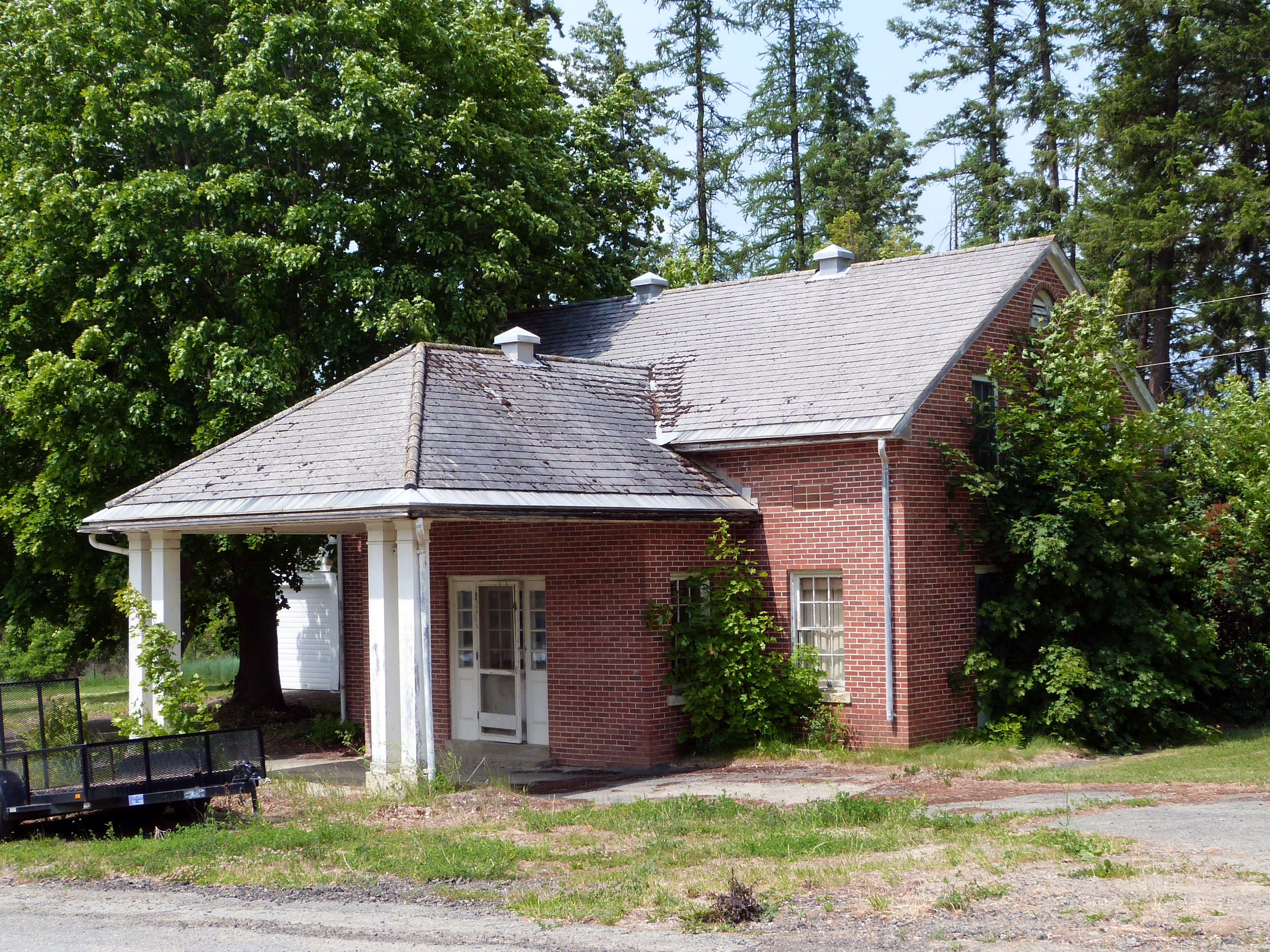

 |
  October 12, 1947 - Kiwanis Peace Marker, Porthill, Idaho (USA). Opposite Rykerts British Columbia (Canada). Image & text from The Spokesman-Review of Spokane, Washington, Oct. 14, 1947: "Peace Marker Dedicated Near Porthill. Governor C.A. Robins of Idaho (left) shakes hands with Sqd. Leader N.C. McLeod, aide-de-camp of the Canadian lieutenant governor general in front of the Kiwanis International peace marker dedicated Sunday on the international boundary of Canada and the United States near Porthill, Idaho. The stone marker is the 22d such marker placed on the 3000-mile border between the two countries by the Kiwanis club...." This article is the only information found after identifying this marker from the 1961 list of Kiwanis markers identified at top of this webpage. Right image shows former (1947?) US inspection station at Porthill. October 12, 1947 - Kiwanis Peace Marker, Porthill, Idaho (USA). Opposite Rykerts British Columbia (Canada). Image & text from The Spokesman-Review of Spokane, Washington, Oct. 14, 1947: "Peace Marker Dedicated Near Porthill. Governor C.A. Robins of Idaho (left) shakes hands with Sqd. Leader N.C. McLeod, aide-de-camp of the Canadian lieutenant governor general in front of the Kiwanis International peace marker dedicated Sunday on the international boundary of Canada and the United States near Porthill, Idaho. The stone marker is the 22d such marker placed on the 3000-mile border between the two countries by the Kiwanis club...." This article is the only information found after identifying this marker from the 1961 list of Kiwanis markers identified at top of this webpage. Right image shows former (1947?) US inspection station at Porthill.
|
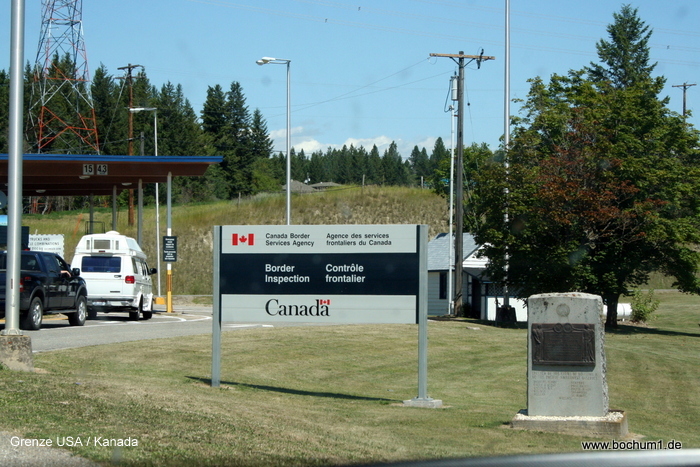


 |
  September 26, 1948 - Kiwanis Peace Marker, between Eastport, Idaho (USA) & Kingsgate, British Columbia (Canada). From The Spokesman-Review of Spokane, Washington, Sept. 23, 1948: "Bonners Ferry, Idaho, Sept. 22. (AP)--The marker...will rest on a base in which will be placed a stone from each of the 48 states, the District of Columbia and the five provinces of Canada [sic]... A bronze marker identifying the source will be place in front of each stone... The program is being sponsored by the Kiwanis clubs of division 8. It will start with a parade at 1 p.m... A similar peace market [sic] was dedicated at the United States-Candadian border at Porthill, Idaho, last fall...." This article is the only written information found after identifying this marker from the 1961 list of Kiwanis markers identified at top of this webpage. Left image is from a travel blog in German. September 26, 1948 - Kiwanis Peace Marker, between Eastport, Idaho (USA) & Kingsgate, British Columbia (Canada). From The Spokesman-Review of Spokane, Washington, Sept. 23, 1948: "Bonners Ferry, Idaho, Sept. 22. (AP)--The marker...will rest on a base in which will be placed a stone from each of the 48 states, the District of Columbia and the five provinces of Canada [sic]... A bronze marker identifying the source will be place in front of each stone... The program is being sponsored by the Kiwanis clubs of division 8. It will start with a parade at 1 p.m... A similar peace market [sic] was dedicated at the United States-Candadian border at Porthill, Idaho, last fall...." This article is the only written information found after identifying this marker from the 1961 list of Kiwanis markers identified at top of this webpage. Left image is from a travel blog in German.
|
 

|
  1949 - Kiwanis Peace Plaque, Oroville, Okanogan County, Washington (USA). Upper image from IUPUI archives with this caption: "Washington Kiwanis Peace Tablet, 1949. A table [sic] memorializing the century of peace between Canada and the United States is unveiled in Okanogan, Washington in 1949. The tablet was sponsored by the clubs of Division Five of the Pacific Northwest Kiwanis District." Image shows at least 13 young women, each wearing a corsage. Note names of many sponsoring clubs on the marker (4 in BC, 6 in Washington) & a nearby IBC monument. /// Otherwise, all written info about this plaque is from a single sentence in a short undated newspaper article (from Olympia, WA) about state authorities' delaying approval of a Lions Club peace arch at the same location as a Kiwanis marker erected in 1953 [sic]. /// Bottom image shows the Canadian inspection station in 1997 with unidentifiied monument in a cluster of shrubbery. 1949 - Kiwanis Peace Plaque, Oroville, Okanogan County, Washington (USA). Upper image from IUPUI archives with this caption: "Washington Kiwanis Peace Tablet, 1949. A table [sic] memorializing the century of peace between Canada and the United States is unveiled in Okanogan, Washington in 1949. The tablet was sponsored by the clubs of Division Five of the Pacific Northwest Kiwanis District." Image shows at least 13 young women, each wearing a corsage. Note names of many sponsoring clubs on the marker (4 in BC, 6 in Washington) & a nearby IBC monument. /// Otherwise, all written info about this plaque is from a single sentence in a short undated newspaper article (from Olympia, WA) about state authorities' delaying approval of a Lions Club peace arch at the same location as a Kiwanis marker erected in 1953 [sic]. /// Bottom image shows the Canadian inspection station in 1997 with unidentifiied monument in a cluster of shrubbery.
|







|
  Date? - Kiwanis Peace Plaque, on boundary between Oroville, Washington (USA) & Osoyoos, British Columbia (Canada). Upper left image shows four friendship monuments moved from perevious locations to the new joint inspection station on the border between Oroville & Osoyoos. Kiwanis plaque is at far left, followed by Canadian Legion monument, Lions Club friendship arch, Rotary Club monument, and official IBA monument on border. These monuments are small white flecks in the lower air view, on the driveway east of the building & just inside the USA. Date? - Kiwanis Peace Plaque, on boundary between Oroville, Washington (USA) & Osoyoos, British Columbia (Canada). Upper left image shows four friendship monuments moved from perevious locations to the new joint inspection station on the border between Oroville & Osoyoos. Kiwanis plaque is at far left, followed by Canadian Legion monument, Lions Club friendship arch, Rotary Club monument, and official IBA monument on border. These monuments are small white flecks in the lower air view, on the driveway east of the building & just inside the USA.
|
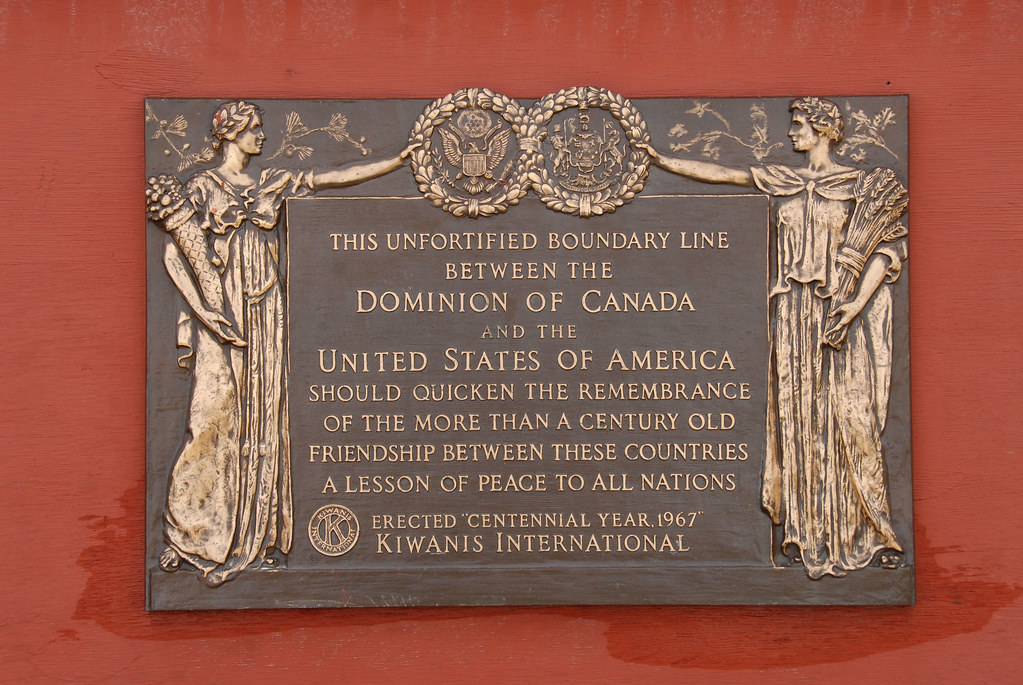


 

|   1967 - Centennial Marker, Klondike Highway, Fraser, British Columbia (Canada). Inscribed "Erected Centennial Year, 1967." 1967 is the centennial of Canadian Confederation on July 1, 1867! /// According to Wikipedia, "Fraser, British Columbia is a location on the Klondike Highway [& White Pass & Yukon Route] railway in northwestern British Columbia. It has no permanent residents or businesses." But Fraser contains the border crossing between Skagway, Alaska, & Whitehorse, Yukon. And the marker appers to be mounted to the north wall of the railway building (note same color!). /// Upper left image ("taken on September 1, 2006, by DrLensCap [sic]") is from Flickriver. Upper right image from The Explore North Blog shows same railway building in winter. /// N.B.: This may be the only Kiwanis marker specially inscribed for an event or anything other than its date of dedication. This marker & the 1962 marker in Lewiston, NY (qv), also appear to be darker than previous Kiwanis markers (made from different kind of bronze?). 1967 - Centennial Marker, Klondike Highway, Fraser, British Columbia (Canada). Inscribed "Erected Centennial Year, 1967." 1967 is the centennial of Canadian Confederation on July 1, 1867! /// According to Wikipedia, "Fraser, British Columbia is a location on the Klondike Highway [& White Pass & Yukon Route] railway in northwestern British Columbia. It has no permanent residents or businesses." But Fraser contains the border crossing between Skagway, Alaska, & Whitehorse, Yukon. And the marker appers to be mounted to the north wall of the railway building (note same color!). /// Upper left image ("taken on September 1, 2006, by DrLensCap [sic]") is from Flickriver. Upper right image from The Explore North Blog shows same railway building in winter. /// N.B.: This may be the only Kiwanis marker specially inscribed for an event or anything other than its date of dedication. This marker & the 1962 marker in Lewiston, NY (qv), also appear to be darker than previous Kiwanis markers (made from different kind of bronze?).
|
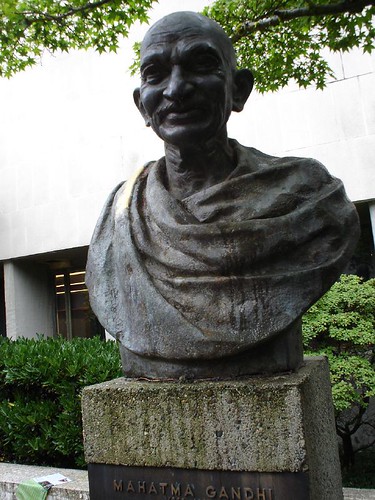
![]()
|   1969 - Bust of Mahatma Gandhi, between Shrum buildings, Simon Frazier University, Burnaby, British Columbia (Canada). Entry #1227 in the "Peace Movement Directory" by James Richard Bennett (2001). 1969 - Bust of Mahatma Gandhi, between Shrum buildings, Simon Frazier University, Burnaby, British Columbia (Canada). Entry #1227 in the "Peace Movement Directory" by James Richard Bennett (2001).
|
 |   1986 - Pacific Bell, University of British Columbia, Vancouver, British Columbia (Canada). Designed by Masahiko Katori [1899-1988]. Dedicated by Yasuhiro Nakasone, Prime Minister of Japan. 1986 - Pacific Bell, University of British Columbia, Vancouver, British Columbia (Canada). Designed by Masahiko Katori [1899-1988]. Dedicated by Yasuhiro Nakasone, Prime Minister of Japan. 
|

|   1987 - Inuksuk, English Bay, Vancouver, British Columbia (Canada). "This is a contemporary work created by artisan Alvin Kanak of Rankin Inlet, Northwest Territories (which is now in the territory of Nunavut that separated from the Northwest Territories in 1999). It was given as a gift to the city for Expo 86. The land has since been donated to the city, and it is now a protected site. Friendship and the welcoming of the world are the meanings of both the English Bay structure and the 2010 Winter Olympics emblem (qv). Kanak's work represents the strength of his people and the modes of communication and technology before modern Canada." 1987 - Inuksuk, English Bay, Vancouver, British Columbia (Canada). "This is a contemporary work created by artisan Alvin Kanak of Rankin Inlet, Northwest Territories (which is now in the territory of Nunavut that separated from the Northwest Territories in 1999). It was given as a gift to the city for Expo 86. The land has since been donated to the city, and it is now a protected site. Friendship and the welcoming of the world are the meanings of both the English Bay structure and the 2010 Winter Olympics emblem (qv). Kanak's work represents the strength of his people and the modes of communication and technology before modern Canada."
|

|   Date? - Inuksuk, Lake Windermere, Invermere, East Kootenay Region, British Columbia (Canada). Date? - Inuksuk, Lake Windermere, Invermere, East Kootenay Region, British Columbia (Canada).
|
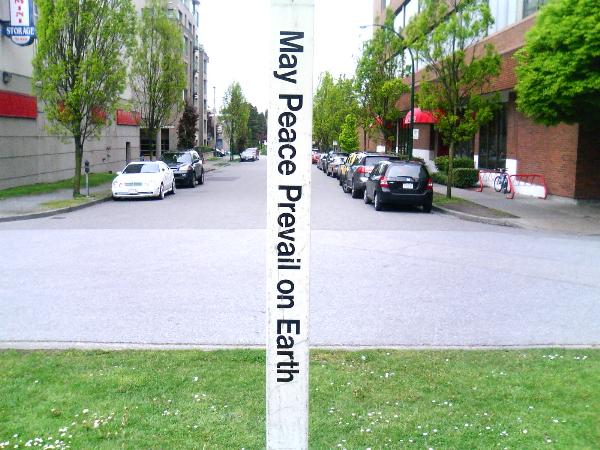
|   1987 - Seaforth Peace Park & Fountain, Burrard Street Bridge (south end), Vancouver, British Columbia (Canada). Click here for air view. Entry #1247 in the "Peace Movement Directory" by James Richard Bennett (2001). 1987 - Seaforth Peace Park & Fountain, Burrard Street Bridge (south end), Vancouver, British Columbia (Canada). Click here for air view. Entry #1247 in the "Peace Movement Directory" by James Richard Bennett (2001).
|


![]()
|   1987 - Doukhobor Village Museum, 112 Heritage Way, Castlegar, Kootenay Region, British Columbia (Canada). "A reconstructon of a typical Doukhobor village, as lived in 1908-1939 showing all of the major buldings, tools, handicrafts and instruments used at the time." Has statue of Leo Tolstoy [1828-1910]. Entry #1228 in the "Peace Movement Directory" by James Richard Bennett (2001). 1987 - Doukhobor Village Museum, 112 Heritage Way, Castlegar, Kootenay Region, British Columbia (Canada). "A reconstructon of a typical Doukhobor village, as lived in 1908-1939 showing all of the major buldings, tools, handicrafts and instruments used at the time." Has statue of Leo Tolstoy [1828-1910]. Entry #1228 in the "Peace Movement Directory" by James Richard Bennett (2001).

|
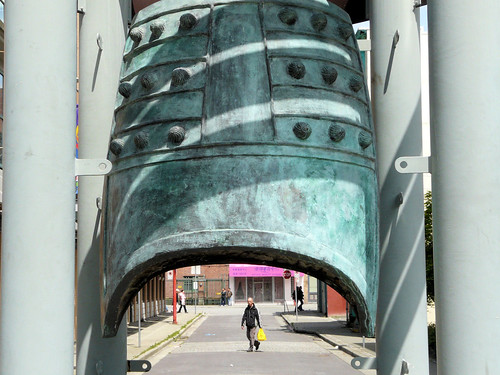
|   Date? - West Han Dynesty Bell, Shangahi Alley, Chinatown, Vancouver, British Columbia (Canada). Replica of a bell unearthed in Guangzhou in 1983. Gift from the City of Guangzhou to the City of Vancouver for the 15th anniversary of the twinning of the two cities. Date? - West Han Dynesty Bell, Shangahi Alley, Chinatown, Vancouver, British Columbia (Canada). Replica of a bell unearthed in Guangzhou in 1983. Gift from the City of Guangzhou to the City of Vancouver for the 15th anniversary of the twinning of the two cities. 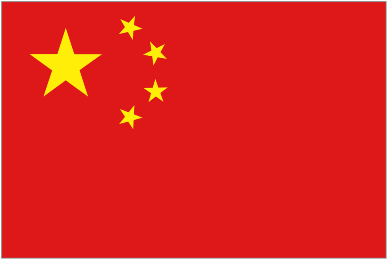
|
![]()
|   1993 - Cumberland Peace Park, Cumberland, Bowen Island, British Columbia (Canada). Entry #1232 in the "Peace Movement Directory" by James Richard Bennett (2001). 1993 - Cumberland Peace Park, Cumberland, Bowen Island, British Columbia (Canada). Entry #1232 in the "Peace Movement Directory" by James Richard Bennett (2001).
|

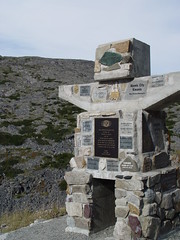




 |
  July 4, 2003 - Kiwanis Peace Cairn & Plaque near Skagway, Alaska (USA). At border between Alaska & British Columbia. On road from Skagway to Whitehorse in the Klondike part of Yukon Turritory. Multiple Kiwanis plaques on an inuksuk with a concrete core.
/// Built "with contributions of Kiwanis clubs in Canada (mostly BC) & the U.S. (mostly Washington), this stone monument on the Alaska/Canada border reads: 'This unfortified boundary line between the Dominion of Canada and the United States of America should quicken the remembrance of the more than a century old friendship between these countries, a lesson of peace to all nations.'"
/// From "Pacific Northwest District Builder," September 2003, page 13: "The most unique Kiwanis Peace Marker on the U.S./Canadian
border... Led by the Whitehorse, Yukon Territory club and club President Stan Marinoske, Kiwanians from the AYN Division spent the July 4th weekend
building the first Peace Marker monument to be constructed on the
U.S./Canadian Border in over twenty years...
Located on the Alaskan side of the border at the Skagway/Fraser border
crossing, the monument is a ten foot tall representation of a Inuksuk – the
classic Inuit stone figure...
Designed by Whitehorse Kiwanian Rob Mason, a professional architect, the
monument features over 30 commemorative stones donated by other Pacific
Northwest Clubs in Alaska, British Columbia, Oregon, Washington & Idaho...
The four day project was several years and $10,000 in the making...." /// Is this the last of the Kiwanis peace markers? July 4, 2003 - Kiwanis Peace Cairn & Plaque near Skagway, Alaska (USA). At border between Alaska & British Columbia. On road from Skagway to Whitehorse in the Klondike part of Yukon Turritory. Multiple Kiwanis plaques on an inuksuk with a concrete core.
/// Built "with contributions of Kiwanis clubs in Canada (mostly BC) & the U.S. (mostly Washington), this stone monument on the Alaska/Canada border reads: 'This unfortified boundary line between the Dominion of Canada and the United States of America should quicken the remembrance of the more than a century old friendship between these countries, a lesson of peace to all nations.'"
/// From "Pacific Northwest District Builder," September 2003, page 13: "The most unique Kiwanis Peace Marker on the U.S./Canadian
border... Led by the Whitehorse, Yukon Territory club and club President Stan Marinoske, Kiwanians from the AYN Division spent the July 4th weekend
building the first Peace Marker monument to be constructed on the
U.S./Canadian Border in over twenty years...
Located on the Alaskan side of the border at the Skagway/Fraser border
crossing, the monument is a ten foot tall representation of a Inuksuk – the
classic Inuit stone figure...
Designed by Whitehorse Kiwanian Rob Mason, a professional architect, the
monument features over 30 commemorative stones donated by other Pacific
Northwest Clubs in Alaska, British Columbia, Oregon, Washington & Idaho...
The four day project was several years and $10,000 in the making...." /// Is this the last of the Kiwanis peace markers? |

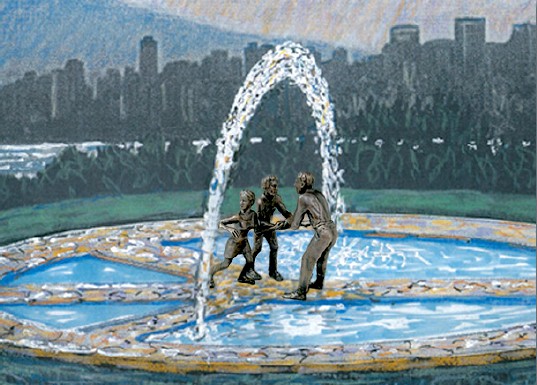
 |   Proposed in 2004 - "The Welcoming," Nelson, British Columbia (Canada). Also known as the "Draft Dodger Monument." "A 60-foot Peace-Sign base of rock & pools of water, with the '3-fingered' end of the Peace-Sign indicating the journey from all parts of the US, & where the 'Water Arches' indicate the US/Canadian border, where there is an American man & woman being welcomed by a Canadian with outstreached arms & welcoming hands." "Roughly 125,000 Americans crossed the border into Canada during the 1960's & 1970's because of their opposition to the Vietnam War. Many settled in the Nelson area...
The plan got the attention of FOX-TV News in the US & has come under fire from Americans, veterans groups & some Canadian politicians.
As a result of the criticism, the city of Nelson, afraid of alienating US tourists, has distanced itself from the proposal." "More recently, servicemen deserting from America's war with Iraq have found their way to Nelson." Proposed in 2004 - "The Welcoming," Nelson, British Columbia (Canada). Also known as the "Draft Dodger Monument." "A 60-foot Peace-Sign base of rock & pools of water, with the '3-fingered' end of the Peace-Sign indicating the journey from all parts of the US, & where the 'Water Arches' indicate the US/Canadian border, where there is an American man & woman being welcomed by a Canadian with outstreached arms & welcoming hands." "Roughly 125,000 Americans crossed the border into Canada during the 1960's & 1970's because of their opposition to the Vietnam War. Many settled in the Nelson area...
The plan got the attention of FOX-TV News in the US & has come under fire from Americans, veterans groups & some Canadian politicians.
As a result of the criticism, the city of Nelson, afraid of alienating US tourists, has distanced itself from the proposal." "More recently, servicemen deserting from America's war with Iraq have found their way to Nelson."

|

![]()
|   Date? - Marine Peace Park, 750 Marine Park Drive NE, Salmon Arm, British Columbia (Canada). "Located at the wharf on the shores of Shuswap Lake. The park is the site of WOW (Wednesday on the wharf) a wonderful community attraction. This site is also a great location for weddings. The Raven Trail connects Marine Park to the Raven subdivision along the scenic Salmon Arm Bay waterfront." Date? - Marine Peace Park, 750 Marine Park Drive NE, Salmon Arm, British Columbia (Canada). "Located at the wharf on the shores of Shuswap Lake. The park is the site of WOW (Wednesday on the wharf) a wonderful community attraction. This site is also a great location for weddings. The Raven Trail connects Marine Park to the Raven subdivision along the scenic Salmon Arm Bay waterfront."
|
 |   Summer 2007 -
Ambassador of Peace Monument, Central Park, Burnaby, British Columbia (Canada). Also known as Kapyong Korean War Memorial. "Recognizes the 36 servicemen from British Columbia who made the supreme sacrifice during the Korean War 1950/53 & during the Peacekeeping period 1953/56.
Their names will be engraved on the Central Park Memorial, including rank, surname, given Names, decorations & unit. Total Canadian casualties were 516 killed, 1558 wounded, & countless others suffer from post traumatic stress syndrome. Approximately 100 servicemen from British Columbia were wounded during the Korean War.
Korea remains as Canada’s third bloodiest war, after WWI & WWII & just ahead of the South African War, the last colonial war more than a century ago. Canadian servicemen & women are putting their lives in harm’s way at this very moment in Afghanistan.
The Korean War, often called the Forgotten War, is worthy of a thought or two by Canadians." Click here for the Battle of Kapyong. Photo made on June 25, 2011. Summer 2007 -
Ambassador of Peace Monument, Central Park, Burnaby, British Columbia (Canada). Also known as Kapyong Korean War Memorial. "Recognizes the 36 servicemen from British Columbia who made the supreme sacrifice during the Korean War 1950/53 & during the Peacekeeping period 1953/56.
Their names will be engraved on the Central Park Memorial, including rank, surname, given Names, decorations & unit. Total Canadian casualties were 516 killed, 1558 wounded, & countless others suffer from post traumatic stress syndrome. Approximately 100 servicemen from British Columbia were wounded during the Korean War.
Korea remains as Canada’s third bloodiest war, after WWI & WWII & just ahead of the South African War, the last colonial war more than a century ago. Canadian servicemen & women are putting their lives in harm’s way at this very moment in Afghanistan.
The Korean War, often called the Forgotten War, is worthy of a thought or two by Canadians." Click here for the Battle of Kapyong. Photo made on June 25, 2011.
|
 

|   2010 - Statue of Ilanaaq the Inunnguaq, top of the Whistler Village Gondola, Whistler Blackcomb Resort, Whistler, British Columbia (Canada). Mascot of the 2010 Winter Olympics. "The basis of the logo of the 2010 Winter Olympics [right image] designed by Vancouver artist Elena Rivera MacGregor. Its use has been controversial, both among the Inuit and the First Nations of British Columbia. Although the design has been questioned, people believe it pays tribute to the inuksuk that stands at Vancouver's English Bay." 2010 - Statue of Ilanaaq the Inunnguaq, top of the Whistler Village Gondola, Whistler Blackcomb Resort, Whistler, British Columbia (Canada). Mascot of the 2010 Winter Olympics. "The basis of the logo of the 2010 Winter Olympics [right image] designed by Vancouver artist Elena Rivera MacGregor. Its use has been controversial, both among the Inuit and the First Nations of British Columbia. Although the design has been questioned, people believe it pays tribute to the inuksuk that stands at Vancouver's English Bay."
|
Cambodia
Right click image to enlarge.



 | 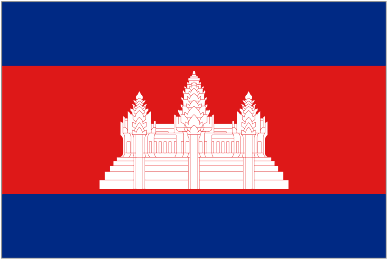 September 27, 2007 - "World of Peace," Kompong Thom (Cambodia). "Depicts three catfish with a globe balancing on the nose of the highest leaping fish." Made out of old guns and weapons that had been used by the Khmer Rouge. September 27, 2007 - "World of Peace," Kompong Thom (Cambodia). "Depicts three catfish with a globe balancing on the nose of the highest leaping fish." Made out of old guns and weapons that had been used by the Khmer Rouge.
|

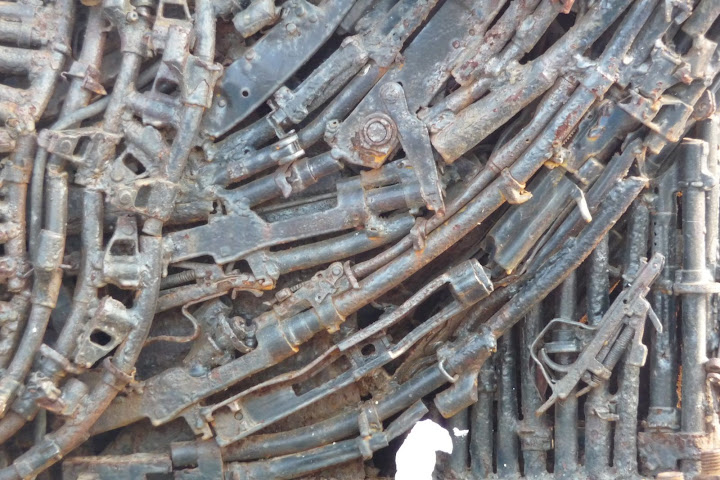

 |  October 9, 2007 - "Naga for Peace & Development," Batambang (Cambodia). "I followed the river down to a large square surrounding a large metal sculpture of (you guessed it) Naga. As I approached the statue, it began to look a little bizarre, as if crafted from many small pieces. It turns out that the large statue is made out of old guns and weapons that had been used by the Khmer Rouge." October 9, 2007 - "Naga for Peace & Development," Batambang (Cambodia). "I followed the river down to a large square surrounding a large metal sculpture of (you guessed it) Naga. As I approached the statue, it began to look a little bizarre, as if crafted from many small pieces. It turns out that the large statue is made out of old guns and weapons that had been used by the Khmer Rouge."
|
China
Click here for China webpage.
East Timor
Right click image to enlarge.

| 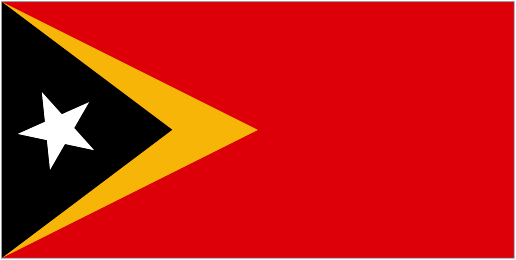 May 19, 2002 -
International People's Park (IPP), Dili (East Timor). "Park & its monument in central Dili [were] inaugurated by United Nations Secretary-General Kofi Annan in the presence of many dignitaries." /// "In 1999, following the United Nations-sponsored act of self-determination, Indonesia relinquished control of the territory, & East Timor became the first new sovereign state of the 21st century on May 20, 2002." May 19, 2002 -
International People's Park (IPP), Dili (East Timor). "Park & its monument in central Dili [were] inaugurated by United Nations Secretary-General Kofi Annan in the presence of many dignitaries." /// "In 1999, following the United Nations-sponsored act of self-determination, Indonesia relinquished control of the territory, & East Timor became the first new sovereign state of the 21st century on May 20, 2002." 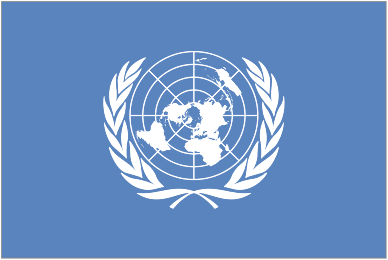
|
Guam (USA)
Right click image to enlarge.
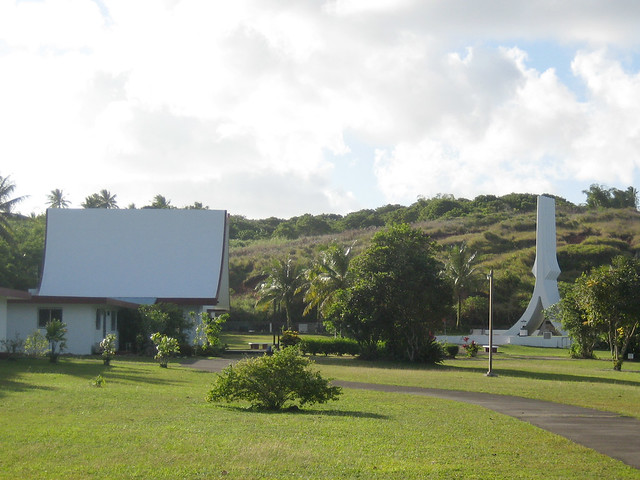
|  
 Date? - Pacific Peace Memorial Park, just off Marine Corps Drive, Mataguac (US Territory of Guam). Dedicated to those lost their lives during World War II. Near the battle site between Japanese and American soldiers. /// "This memorial was erected by a Japanese group to commemorate all those who died on Guam during World War II. It is located the site of the last Japanese command post. Although the island was basically secure, General Obata, Commander of the Japanese forces was still holed up in his command post. It was stormed by American troops on August 12, 1944. Rather than surrender, General Obata committed suicide in his bunker." Date? - Pacific Peace Memorial Park, just off Marine Corps Drive, Mataguac (US Territory of Guam). Dedicated to those lost their lives during World War II. Near the battle site between Japanese and American soldiers. /// "This memorial was erected by a Japanese group to commemorate all those who died on Guam during World War II. It is located the site of the last Japanese command post. Although the island was basically secure, General Obata, Commander of the Japanese forces was still holed up in his command post. It was stormed by American troops on August 12, 1944. Rather than surrender, General Obata committed suicide in his bunker." 
|



|   January 16, 2010 - "Peace Monument," Tamuning Park, Tamuning (US Territory of Guam).
"Soka Gakkai International (SGI) members from Guam, the US mainland, Oceania & Japan gathered to mark the 35th anniversary of the establishment of SGI (January 26, 1975) [and] to unveil a monument dedicated to the SGI's founding & to world peace.
On one side of the monument are the opening lines from Mr. Ikeda's novel, The Human Revolution: 'Nothing is more barbarous than war. Nothing is more cruel. And yet, the war dragged on.' On the opposite side are the opening lines from The New Human Revolution: 'Nothing is more precious than peace. Nothing brings more happiness. Peace is the most basic starting point for the advancement of humankind.'
In the center of the monument are words from Mr. Ikeda, stating 'Rather than seeking after your own praise or glory, I hope that you will dedicate your noble lives to sowing the seeds of peace throughout the entire world. I shall do the same.'" January 16, 2010 - "Peace Monument," Tamuning Park, Tamuning (US Territory of Guam).
"Soka Gakkai International (SGI) members from Guam, the US mainland, Oceania & Japan gathered to mark the 35th anniversary of the establishment of SGI (January 26, 1975) [and] to unveil a monument dedicated to the SGI's founding & to world peace.
On one side of the monument are the opening lines from Mr. Ikeda's novel, The Human Revolution: 'Nothing is more barbarous than war. Nothing is more cruel. And yet, the war dragged on.' On the opposite side are the opening lines from The New Human Revolution: 'Nothing is more precious than peace. Nothing brings more happiness. Peace is the most basic starting point for the advancement of humankind.'
In the center of the monument are words from Mr. Ikeda, stating 'Rather than seeking after your own praise or glory, I hope that you will dedicate your noble lives to sowing the seeds of peace throughout the entire world. I shall do the same.'"
|
Hawai'i (USA)
Right click image to enlarge.

| T
E
M
P
L
E |   1813 - Ahu'ena Heiau, Kailua-Kona, Hawaii (USA). Heiau / temple dedicated to Lono, Hawaiian God of peace, agriculture and prosperity. Reconstructed by King Kamehameha the Great [d. May 8, 1819]. On the register of National Historic Landmarks as one of the most important of Hawaii's historic sites. Visited by EWL. 1813 - Ahu'ena Heiau, Kailua-Kona, Hawaii (USA). Heiau / temple dedicated to Lono, Hawaiian God of peace, agriculture and prosperity. Reconstructed by King Kamehameha the Great [d. May 8, 1819]. On the register of National Historic Landmarks as one of the most important of Hawaii's historic sites. Visited by EWL.
|

| S
H
R
I
N
E |   1962 - USS Arizona Memorial Musuem, National Park Service (NPS), 1 Arizona Memorial Place, Pearl Harbor, Honolulu, Oahu Island, Hawaii (USA). "The underwater USS Arizona serves as the final resting place for many of the battleship's 1,177 crew members who lost their lives on December 7, 1941." One of 27 US museums in "Museums for Peace Worldwide" edited by Kazuyo Yamane (2008). 1962 - USS Arizona Memorial Musuem, National Park Service (NPS), 1 Arizona Memorial Place, Pearl Harbor, Honolulu, Oahu Island, Hawaii (USA). "The underwater USS Arizona serves as the final resting place for many of the battleship's 1,177 crew members who lost their lives on December 7, 1941." One of 27 US museums in "Museums for Peace Worldwide" edited by Kazuyo Yamane (2008). 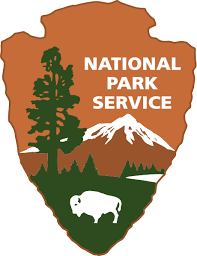
|



|   Christmas Day, December 1963 - Peace Corps Memorial Monument, Old Hilo County Hospital site near Rainbow Falls, Hilo, Big Island (Hawaii). "Upon learning of Kennedy's assassination November 22, 1963, members of the the Peace Corps Training Center donated a dollar apiece from their
$10.50 weekly salary to pay for a bronze plaque bearing the words, 'And So, My Fellow Americans, Ask Not What Your Country Can Do For You, Ask What You Can Do For Your Country,' from his inaugural address." Christmas Day, December 1963 - Peace Corps Memorial Monument, Old Hilo County Hospital site near Rainbow Falls, Hilo, Big Island (Hawaii). "Upon learning of Kennedy's assassination November 22, 1963, members of the the Peace Corps Training Center donated a dollar apiece from their
$10.50 weekly salary to pay for a bronze plaque bearing the words, 'And So, My Fellow Americans, Ask Not What Your Country Can Do For You, Ask What You Can Do For Your Country,' from his inaugural address."
|




| B
E
L
L |   About 1970 - Peace Bell, Byodo-In Temple, Valley of the Temples, Oahu Island, Hawaii (USA). Temple completed June 7, 1968, & is a replica of Byodo-in Temple which was originally built in 998 in the city of Uji, Kyoto Prefecture (Japan). Another replica served as Japan's official exhibit at the World's Columbian Exposition in Chicago in 1893. About 1970 - Peace Bell, Byodo-In Temple, Valley of the Temples, Oahu Island, Hawaii (USA). Temple completed June 7, 1968, & is a replica of Byodo-in Temple which was originally built in 998 in the city of Uji, Kyoto Prefecture (Japan). Another replica served as Japan's official exhibit at the World's Columbian Exposition in Chicago in 1893. 
|



| B
E
L
L |   After 1972? - Bell Tower, Golden Bamboo Grove, Nani Mau Gardens, 421 Makalika Street, Hilo, Big Island of Hawaii, Hawaii (USA). "Japanese style bell tower crafted from 20,000 boards without utilizing any nails or screws. One of only 3 towers built utilizing this technique in the world. The other two are located in Canada and France." In botanical garden established by Makato Nitahara and opened to the public in 1972. After 1972? - Bell Tower, Golden Bamboo Grove, Nani Mau Gardens, 421 Makalika Street, Hilo, Big Island of Hawaii, Hawaii (USA). "Japanese style bell tower crafted from 20,000 boards without utilizing any nails or screws. One of only 3 towers built utilizing this technique in the world. The other two are located in Canada and France." In botanical garden established by Makato Nitahara and opened to the public in 1972. 
|



| B
E
L
L |   1985 - Hiroshima Peace Bell, Izumo Taisha Mission, North Kukui Street, Honolulu, Hawaii (USA). Said to be a replica of the Hiroshima Peace Bell (qv). Hiroshima & Honolulu are sister cities. 1985 - Hiroshima Peace Bell, Izumo Taisha Mission, North Kukui Street, Honolulu, Hawaii (USA). Said to be a replica of the Hiroshima Peace Bell (qv). Hiroshima & Honolulu are sister cities. 
|


|   1986 - Hawaii Peace Memorial, Kennedy Theatre, Manoa Campus, University of Hawai`i, Honolulu, Hawai`i (USA). Granite monument commemorates Japanese immigration to Hawai‘i. Click here for a PowerPoint presentation. 1986 - Hawaii Peace Memorial, Kennedy Theatre, Manoa Campus, University of Hawai`i, Honolulu, Hawai`i (USA). Granite monument commemorates Japanese immigration to Hawai‘i. Click here for a PowerPoint presentation. 
|

|   Date? - Paleaku Peace Gardens Sanctuary, Captain Cook, Kailua-Kona, Big Island, Hawaii (USA). "A seven acre botanical garden that facilitates educational, spiritual, and cultural programs. Our mission is to offer a sanctuary for the advancement of individuals toward peace and harmony." Image shows Galaxy Garden, "a meticulously planned garden spanning about 30 meters providing a relatively accurate map of our Milky Way Galaxy. Different plants depict stars, globular clusters, and even nebulas. Many bright stars visible in Earth's night sky are depicted on leaves surrounding the marked location of the Sun. Plant rows were placed to represent arms of our Galaxy, including the Sun's Orion Arm, the impressive Sagittarius Arm, and the little discussed Norma Arm. A small bar runs through our Galaxy's center, while a fountain has been built to represent the central black hole. What a stellar use of space! Credit & Copyright: Garden by Jon Lomberg; Kite Aerial Photography by Pierre and Heidy Lesage; NASA website." Date? - Paleaku Peace Gardens Sanctuary, Captain Cook, Kailua-Kona, Big Island, Hawaii (USA). "A seven acre botanical garden that facilitates educational, spiritual, and cultural programs. Our mission is to offer a sanctuary for the advancement of individuals toward peace and harmony." Image shows Galaxy Garden, "a meticulously planned garden spanning about 30 meters providing a relatively accurate map of our Milky Way Galaxy. Different plants depict stars, globular clusters, and even nebulas. Many bright stars visible in Earth's night sky are depicted on leaves surrounding the marked location of the Sun. Plant rows were placed to represent arms of our Galaxy, including the Sun's Orion Arm, the impressive Sagittarius Arm, and the little discussed Norma Arm. A small bar runs through our Galaxy's center, while a fountain has been built to represent the central black hole. What a stellar use of space! Credit & Copyright: Garden by Jon Lomberg; Kite Aerial Photography by Pierre and Heidy Lesage; NASA website."
|
 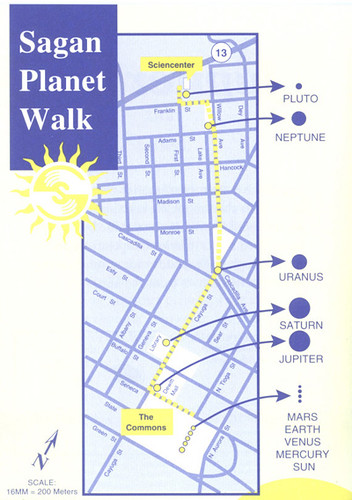
 |

  1997 - Sagan Planet Walk, Ithaca, New York (USA). "Scale model of the solar system on a 5,000,000,000:1 scale... Carl Sagan [1934-19xx], of course, taught at Cornell (located in Ithaca) for many years, which is his connection to the town; hence the location for the memorial...But my favorite thing about the planet walk I don't have a photograph of. It isn't on the map; it isn't in Ithaca -- it doesn't even exist yet, and it probably never will. But there has been talk apparently about building a matching, to-scale monolith for Alpha Centauri, the nearest star to the Sun. It would be in Hawaii." 1997 - Sagan Planet Walk, Ithaca, New York (USA). "Scale model of the solar system on a 5,000,000,000:1 scale... Carl Sagan [1934-19xx], of course, taught at Cornell (located in Ithaca) for many years, which is his connection to the town; hence the location for the memorial...But my favorite thing about the planet walk I don't have a photograph of. It isn't on the map; it isn't in Ithaca -- it doesn't even exist yet, and it probably never will. But there has been talk apparently about building a matching, to-scale monolith for Alpha Centauri, the nearest star to the Sun. It would be in Hawaii."
|

|   2000 - Leahi Millennium Peace Garden, Diamond Head, Honolulu, Hawaii (USA). "Created by teens from around the globe to promote peace and cultural understanding and now stands as a symbol of solidarity and hope." 2000 - Leahi Millennium Peace Garden, Diamond Head, Honolulu, Hawaii (USA). "Created by teens from around the globe to promote peace and cultural understanding and now stands as a symbol of solidarity and hope."
|

|   2006 - "Plant Peace" Mural, Leahi Millennium Peace Garden, Diamond Head, Honolulu, Hawaii (USA). 2006 - "Plant Peace" Mural, Leahi Millennium Peace Garden, Diamond Head, Honolulu, Hawaii (USA).
|

|   2009? - "Let Peace Blossom," Konawaena High School, Kealakekua, Hawaii (USA). "Celebrating the inaugural of President Obama, student painted a peace mural, 12ft x 5ft." Contains peace symbol, waves, flowers, music dance & other Hawaiian themes. Words on left side: PEACE, LOVE, JOY, KINDNESS, HOPE, HARMONY, LAUGHTER, FRIENDSHIP, FUN, FREEDOM, UNITY, FAITH, HAPPINESS, TRUST, SERENITY, ALOHA. 2009? - "Let Peace Blossom," Konawaena High School, Kealakekua, Hawaii (USA). "Celebrating the inaugural of President Obama, student painted a peace mural, 12ft x 5ft." Contains peace symbol, waves, flowers, music dance & other Hawaiian themes. Words on left side: PEACE, LOVE, JOY, KINDNESS, HOPE, HARMONY, LAUGHTER, FRIENDSHIP, FUN, FREEDOM, UNITY, FAITH, HAPPINESS, TRUST, SERENITY, ALOHA.
|
Indonesia
Right click image to enlarge.

| 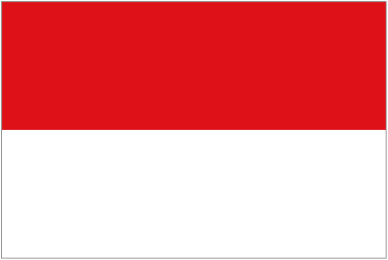 After 2002 - Bali Bombing Memorial, Kuta, Bali (Indonesia). Also known as Peace Memorial? Kuta is one of Indonesia's major tourist destinations and site of bombings on October 12, 2002 (202 killed), and October 1, 2005 (26 killed). See Bali Monument in London (England). After 2002 - Bali Bombing Memorial, Kuta, Bali (Indonesia). Also known as Peace Memorial? Kuta is one of Indonesia's major tourist destinations and site of bombings on October 12, 2002 (202 killed), and October 1, 2005 (26 killed). See Bali Monument in London (England).
|
 

|  2009 - Gong Perdamaian Dunia / World Peace Gong, Ambon city centre, Ambon Island, Maluku Islands (Indonesia). "Erected to remind the people of Maluku & the visitors of a fundamental need for peace & security.
On the surface of the gong, national flags of all countries around the world & the symbols pertaining to religions, including Christianity, Islam, Judaism, Buddhism, Hinduism & others, have been printed.
According to Florence Sahusilawane, spokesperson for the Maluku Culture & Tourism Office, the gong has been attracting a lot of local & foreign tourists.
She noted that the 34th world peace gong [sic] was set up in the centre of Ambon to inform the world that the area is safe for tourists.
Florence said the World Peace Gong has been set up in the Maluku provincial city of Ambon instead of Indonesia`s capital city because peace & security has been restored in the province after a three-year sectarian violence." 2009 - Gong Perdamaian Dunia / World Peace Gong, Ambon city centre, Ambon Island, Maluku Islands (Indonesia). "Erected to remind the people of Maluku & the visitors of a fundamental need for peace & security.
On the surface of the gong, national flags of all countries around the world & the symbols pertaining to religions, including Christianity, Islam, Judaism, Buddhism, Hinduism & others, have been printed.
According to Florence Sahusilawane, spokesperson for the Maluku Culture & Tourism Office, the gong has been attracting a lot of local & foreign tourists.
She noted that the 34th world peace gong [sic] was set up in the centre of Ambon to inform the world that the area is safe for tourists.
Florence said the World Peace Gong has been set up in the Maluku provincial city of Ambon instead of Indonesia`s capital city because peace & security has been restored in the province after a three-year sectarian violence."
|
Google translation: "Gong Perdamaian Dunia (World Peace Gong) is located in Kota Ambon, made ??in 2009, after an kerusuan. Gong is available in 35 country flags, namely: 1. China, 2. India, 3. Mozambique, 4. Laos, 5. Hungary, 6. Egypt, 7. Canada, 8. Netherlands, 9. Iran, 10. Finland, 11. Venuzuela, 12. Morocco, 13. North Korea, 14. South Korea, 15. Malaysia, 16. Thailand, 17. Bosnia, 18. Japan, 19. Suriname, 20. Germany, 21. Austria, 22. South Africa, 23. Vietnam, 24. Papua New Guinea, 25. United States, 26. Australia, 27. Cuba, 28. Singapore, 29. Croatia, 30. Russia, 31. Algeria, 32. Philipines, 33. Poland, 34. Ukranine, 35. Indonesia."
Iwo Jima (Japan)
Right click image to enlarge.

|  May 19, 1985 - "Reunion of Honor" Monument", Iwo Jima Island, Ogasawara (Japan). Inscription reads in English and Japanese, "On the 40th anniversary of the Battle of Iwo Jima, American and Japanese veterans met again on these same sands, this time in peace and friendship..." Ogasawara is one of eight villages of Tokyo. May 19, 1985 - "Reunion of Honor" Monument", Iwo Jima Island, Ogasawara (Japan). Inscription reads in English and Japanese, "On the 40th anniversary of the Battle of Iwo Jima, American and Japanese veterans met again on these same sands, this time in peace and friendship..." Ogasawara is one of eight villages of Tokyo. 
|
Laos
Right click image to enlarge.
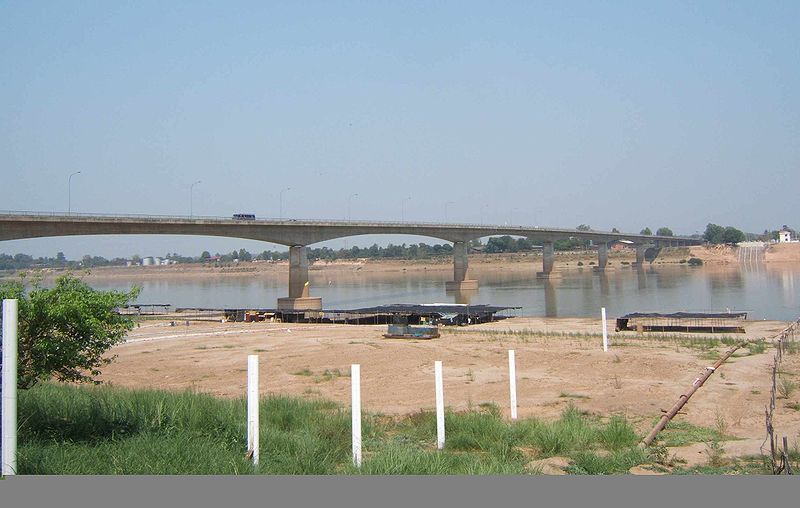
| B
R
I
D
G
E | 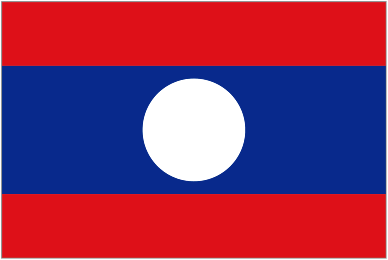 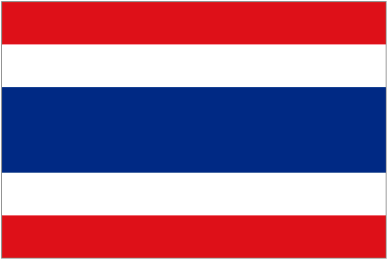 April 8, 1994 - Thai-Lao Friendship Bridge, Mekong River (Thailand & Laos). Connects
Nong Khai (Thailand) & Vientiane (Laos). "With a length of 1,170 m, the bridge has two 3.5 m-wide road lanes, two 1.5 m-wide footpaths and a single metre gauge railway line in the middle, straddling the narrow central reservation." April 8, 1994 - Thai-Lao Friendship Bridge, Mekong River (Thailand & Laos). Connects
Nong Khai (Thailand) & Vientiane (Laos). "With a length of 1,170 m, the bridge has two 3.5 m-wide road lanes, two 1.5 m-wide footpaths and a single metre gauge railway line in the middle, straddling the narrow central reservation."
|
Malaysia
Right click image to enlarge.

| 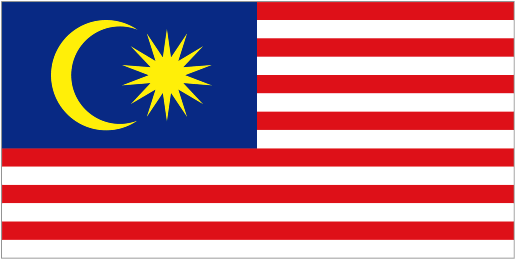 Date? - Peace Park, Layang-Layangan Village, Labuan Federal Territory (LFT), Borneo Island (Malaysia). Adjacent to Surrender Point where the commander of the Japanese Army surrendered to the Australians on September 9, 1945, leading to the end of WW-II in Borneo."This beautiful landscaped park was built as a memorial and renunciation of the horrers [sic] of war. A huge man-made mound is the focal point and there is a plaque signifying the renunciation of war." Formerly known as Victoria, LFT is "best known as an offshore financial centre as well as a popular tourist destination for the neighboring Bruneians and scuba diving aficionados." Date? - Peace Park, Layang-Layangan Village, Labuan Federal Territory (LFT), Borneo Island (Malaysia). Adjacent to Surrender Point where the commander of the Japanese Army surrendered to the Australians on September 9, 1945, leading to the end of WW-II in Borneo."This beautiful landscaped park was built as a memorial and renunciation of the horrers [sic] of war. A huge man-made mound is the focal point and there is a plaque signifying the renunciation of war." Formerly known as Victoria, LFT is "best known as an offshore financial centre as well as a popular tourist destination for the neighboring Bruneians and scuba diving aficionados." 
|

|  Date? - Laman Asean, Perdana Lake Garden, Before National Monument Square, Kuala Lumpur (Malaysia). "That is the name of the garden next to the National Monument. Different kind and shape of sculptures are found here.
Each sculpture represents a country in the Asean group.
Here is the sculpture from Singapore.
Artist: Han Sai Por
Material: Malaysia Marble
"The six sculptures symbolise the progress & growth, unity, peace and harmony of Asean."
Check out the travellouge 'Towards Peace' for clearer pics of each sculpture." Date? - Laman Asean, Perdana Lake Garden, Before National Monument Square, Kuala Lumpur (Malaysia). "That is the name of the garden next to the National Monument. Different kind and shape of sculptures are found here.
Each sculpture represents a country in the Asean group.
Here is the sculpture from Singapore.
Artist: Han Sai Por
Material: Malaysia Marble
"The six sculptures symbolise the progress & growth, unity, peace and harmony of Asean."
Check out the travellouge 'Towards Peace' for clearer pics of each sculpture."
|


|  2007 - "Islam is Peace," city? (Malaysia). By Russian artist Gregory Pototsky. Presented by the artist on the 50th anniversary of Malaysian independence. "For a long time I searched for a symbol that could represent tolerance across all religious faiths. In the Arabic language the words 'Islam' and 'Peace' have the same roots. Finally, I found one such symbol or rather combination of symbols; it is simple for everyone to understand, and it incorporates the Islamic croissant & the Peace branch of the olive tree.
Their peaceful spatial arrangement combined in one monument, called 'Islam is Peace,' reminds all of us that the word Islam is in reality the word Peace." 2007 - "Islam is Peace," city? (Malaysia). By Russian artist Gregory Pototsky. Presented by the artist on the 50th anniversary of Malaysian independence. "For a long time I searched for a symbol that could represent tolerance across all religious faiths. In the Arabic language the words 'Islam' and 'Peace' have the same roots. Finally, I found one such symbol or rather combination of symbols; it is simple for everyone to understand, and it incorporates the Islamic croissant & the Peace branch of the olive tree.
Their peaceful spatial arrangement combined in one monument, called 'Islam is Peace,' reminds all of us that the word Islam is in reality the word Peace."
|
Mariana Islands (USA)
Right click image to enlarge.


|   Date? - Peace Memorial Park, Suicide Cliff, Saipan Island (US Commonwealth of the Northern Mariana Islands). "From the base of Suicide Cliff, you can look upwards to where many Japanese civilians and soldiers jumped to their deaths." Date? - Peace Memorial Park, Suicide Cliff, Saipan Island (US Commonwealth of the Northern Mariana Islands). "From the base of Suicide Cliff, you can look upwards to where many Japanese civilians and soldiers jumped to their deaths." 
|

|   1979 - North Saipan Korean Peace Memorial, Mount Marpi, Saipan Island (US Commonwealth of the Northern Mariana Islands). "Built in remembrance of all the Koreans forced into slavery & killed during World War II. Next to the memorial, you’ll find the last command post of the Japanese Imperial Army, known as Banadero, with World War II cannons, artillery & tanks preserved in a limestone cave. There’s also a concrete bunker there that still has the imprint from an American bombing. Stop at 800-foot Laderan Banadero (or 'Suicide Cliff'), where Japanese soldiers jumped to their deaths rather than surrendering to the Americans. Between Sabaneta Point & Lagua Katan Point, you’ll find Puntan Sabaneta (also known as 'Banzai Cliff'), where the Japanese fought their last battle & the remaining soldiers & their families jumped off the cliff." 1979 - North Saipan Korean Peace Memorial, Mount Marpi, Saipan Island (US Commonwealth of the Northern Mariana Islands). "Built in remembrance of all the Koreans forced into slavery & killed during World War II. Next to the memorial, you’ll find the last command post of the Japanese Imperial Army, known as Banadero, with World War II cannons, artillery & tanks preserved in a limestone cave. There’s also a concrete bunker there that still has the imprint from an American bombing. Stop at 800-foot Laderan Banadero (or 'Suicide Cliff'), where Japanese soldiers jumped to their deaths rather than surrendering to the Americans. Between Sabaneta Point & Lagua Katan Point, you’ll find Puntan Sabaneta (also known as 'Banzai Cliff'), where the Japanese fought their last battle & the remaining soldiers & their families jumped off the cliff." 
|

|   About 1982 - Peace Memorial, Saipan Island (US Commonwealth of the Northern Mariana Islands). From Saipan Tribune, Jan. 19, 2012: "A Japanese centenarian who is a lifelong educator & specialist in early-childhood education for children with disabilities is on Saipan to search for the peace memorial built some 30 years ago for Koreans who perished during World War II.
Dr. Saburo Shochi, founder of Japan's first school for mentally challenged children called 'Shiinomi Gakuen,' visited yesterday the monuments on the northern part of the island with his assistant, C, & his supporter, Koga Taketoshi, who also served as his translator.
Saipan Tribune joined the 105-year-old Shochi, who is on island for the third time, & his team in search of the peace memorial, making stops at the Korean Memorial, Okinawa Memorial, Last Command Post & Banzai Cliff to find the monument.
Taketoshi said that Shochi, who taught at Daegu Polytechnic College Graduate School in Korea, was instrumental in constructing the monument, which he described as about two meters high and etched with at least 20 Japanese, Korean & American names.
Taketoshi, who used to work for Japan's NHK television channel, recounted that Shochi was joined by a hundred Korean students during the unveiling of the peace memorial some 30 years ago.
Shochi's late daughter, Kuniko, visited the island in the '90s or about 20 years ago & found her father's peace memorial at the present site of the Korean Memorial." About 1982 - Peace Memorial, Saipan Island (US Commonwealth of the Northern Mariana Islands). From Saipan Tribune, Jan. 19, 2012: "A Japanese centenarian who is a lifelong educator & specialist in early-childhood education for children with disabilities is on Saipan to search for the peace memorial built some 30 years ago for Koreans who perished during World War II.
Dr. Saburo Shochi, founder of Japan's first school for mentally challenged children called 'Shiinomi Gakuen,' visited yesterday the monuments on the northern part of the island with his assistant, C, & his supporter, Koga Taketoshi, who also served as his translator.
Saipan Tribune joined the 105-year-old Shochi, who is on island for the third time, & his team in search of the peace memorial, making stops at the Korean Memorial, Okinawa Memorial, Last Command Post & Banzai Cliff to find the monument.
Taketoshi said that Shochi, who taught at Daegu Polytechnic College Graduate School in Korea, was instrumental in constructing the monument, which he described as about two meters high and etched with at least 20 Japanese, Korean & American names.
Taketoshi, who used to work for Japan's NHK television channel, recounted that Shochi was joined by a hundred Korean students during the unveiling of the peace memorial some 30 years ago.
Shochi's late daughter, Kuniko, visited the island in the '90s or about 20 years ago & found her father's peace memorial at the present site of the Korean Memorial."  
|
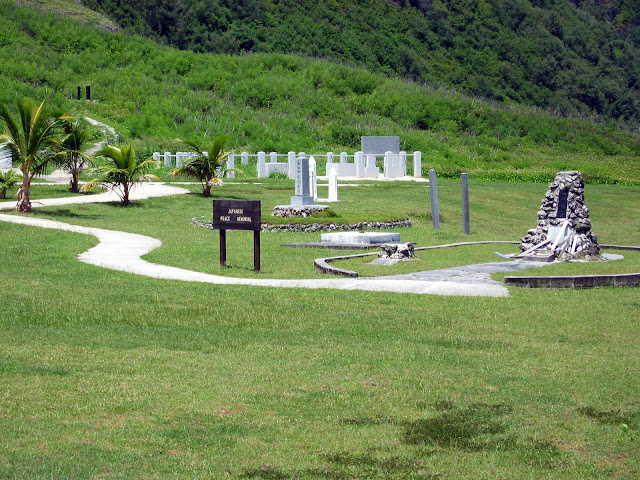 |   Date? - Japanese Peace Memorial, Tinian Island (US Commonwealth of the Northern Marianas Islands). During World War II, Tinian was base for US bombers, including the two B-29's which dropped atomic bombs on Hiroshima & Nagasaki (Japan). Date? - Japanese Peace Memorial, Tinian Island (US Commonwealth of the Northern Marianas Islands). During World War II, Tinian was base for US bombers, including the two B-29's which dropped atomic bombs on Hiroshima & Nagasaki (Japan). 
|

|   Date? - Rotary Peace Monument, American Memorial Park Saipan Island (US Commonwealth of the Northern Mariana Islands).
Inspired by Rotary Club of Wagga Wagga, New South Wales (Australia). Date? - Rotary Peace Monument, American Memorial Park Saipan Island (US Commonwealth of the Northern Mariana Islands).
Inspired by Rotary Club of Wagga Wagga, New South Wales (Australia).  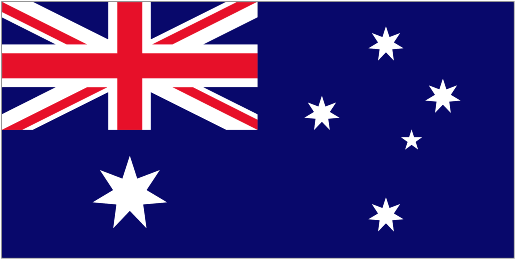
|





|   May 2002 - Gandhi, King, Ikeda Peace Gardens, Leadership Cultural Park, Tinian Island (US Commonwealth of the Northern Marianas Islands). "For the members of Soka Gakkai, an international group that believes in humanistic principles based on Buddhism, the three deserve emulation as they are the paragons of non-violent change." Daisaku Ikeda [right image] is president of Soka Gakkai International (SGI). May 2002 - Gandhi, King, Ikeda Peace Gardens, Leadership Cultural Park, Tinian Island (US Commonwealth of the Northern Marianas Islands). "For the members of Soka Gakkai, an international group that believes in humanistic principles based on Buddhism, the three deserve emulation as they are the paragons of non-violent change." Daisaku Ikeda [right image] is president of Soka Gakkai International (SGI).
|
Mexico
Click here for Mexico webpage.
New Zealand
Click here for Australia & New Zealand webpage.
Okinawa (Japan)
Click here for Okinawa webpage.
Palau
Right click image to enlarge.

|
 January 11, 2002 - Japan-Palau Friendship Bridge (Palau). Three-span extradosed bridge with a length of 413 meters. "Replaced the former Koror-Babeldaob Bridge which collapsed on September 16, 1996, severing water and power to the island of Koror. Until the new bridge was constructed the only connection to the capital and the airport on Babeldaob was via ferry service across the channel." January 11, 2002 - Japan-Palau Friendship Bridge (Palau). Three-span extradosed bridge with a length of 413 meters. "Replaced the former Koror-Babeldaob Bridge which collapsed on September 16, 1996, severing water and power to the island of Koror. Until the new bridge was constructed the only connection to the capital and the airport on Babeldaob was via ferry service across the channel." 
|
Papua New Guinea
Right click image to enlarge.

|  Date? - Japanese Peace Memorial, Namanula Hill, Rabaul, East New Britain Province (Papua New Guinea). "Commands one of the best views of Rabaul and overlooks the harbor. Interestingly, this is the main Japanese memorial in the Pacific." "Instead of capturing Rabaul, the Allied forces bypassed it by establishing a ring of airfields and naval bases on the islands around it. Cut off from re-supply and under continual air attacks as part of Operation Cartwheel, the base became useless. The Japanese held Rabaul until they surrendered at the end of the war in August 1945."
Date? - Japanese Peace Memorial, Namanula Hill, Rabaul, East New Britain Province (Papua New Guinea). "Commands one of the best views of Rabaul and overlooks the harbor. Interestingly, this is the main Japanese memorial in the Pacific." "Instead of capturing Rabaul, the Allied forces bypassed it by establishing a ring of airfields and naval bases on the islands around it. Cut off from re-supply and under continual air attacks as part of Operation Cartwheel, the base became useless. The Japanese held Rabaul until they surrendered at the end of the war in August 1945."

|
Philippines
Right click image to enlarge.


 | M
A
R
C
H
| T
O
W
E
R | B
E
L
L | 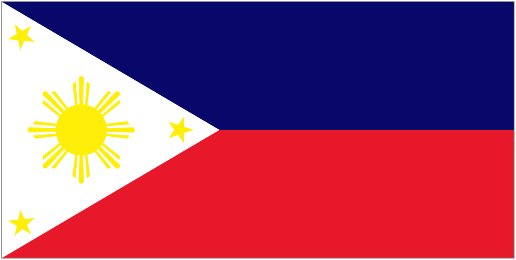 April 8, 1975 - Friendship Tower, Bagac (Philippines). Built by Rissho Kosei-kai of Japan as a sign of friendship and peace between the Philippines and Japan. Helps mark the places where the Bataan Death March started in 1942 (one in Bagac and the other in Mariveles). Dedication coincided with date on which Rissho Kosei-kai celebrates the birth of the Buddha Shakyamuni, founder of Buddhism.
April 8, 1975 - Friendship Tower, Bagac (Philippines). Built by Rissho Kosei-kai of Japan as a sign of friendship and peace between the Philippines and Japan. Helps mark the places where the Bataan Death March started in 1942 (one in Bagac and the other in Mariveles). Dedication coincided with date on which Rissho Kosei-kai celebrates the birth of the Buddha Shakyamuni, founder of Buddhism. 
|

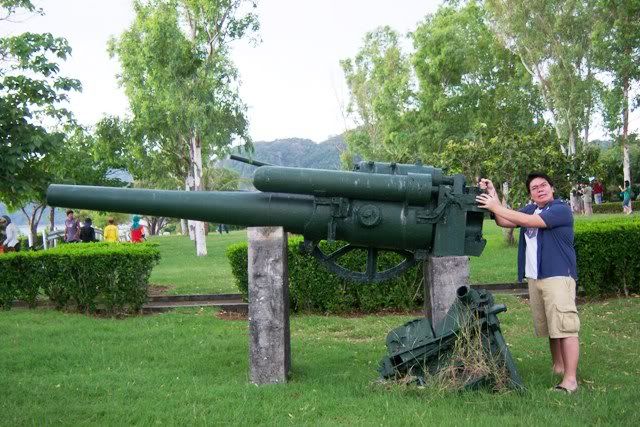

|  1991? - Japanese Garden of Peace, Corregidor Island (Philippines). "Funded by a private Japan-based group that wished to have a memorial to the fallen Japanese soldiers that fought in the area. Garden includes a 10 foot high Buddha made of stone overlooking a reflecting pool, shinto Shrine & other Japanese memorial markers & shrines. For the Japanese war veterans, the Garden serves as a praying area honoring & paying their respects to the soldiers who served or died in Corregidor in WW-II. Anti-aircraft guns have been put on display in the Garden as well as small pavilion houses that display Japanese memorabilia & photographs of WW-II." 1991? - Japanese Garden of Peace, Corregidor Island (Philippines). "Funded by a private Japan-based group that wished to have a memorial to the fallen Japanese soldiers that fought in the area. Garden includes a 10 foot high Buddha made of stone overlooking a reflecting pool, shinto Shrine & other Japanese memorial markers & shrines. For the Japanese war veterans, the Garden serves as a praying area honoring & paying their respects to the soldiers who served or died in Corregidor in WW-II. Anti-aircraft guns have been put on display in the Garden as well as small pavilion houses that display Japanese memorabilia & photographs of WW-II." 
|




 |  Date? - Japanese peace monument, "World Peace Praying Park," New Bilibid Prisons Reservation (NBP), Muntinlupa City, near Manila (Philippines). Twin towers with simple medalion featuring a dove of peace (zoom image to see detail). Adjacent to Japanese bell, peace pole, historic Japanese Cemetery & shrine for Japanese dead. Sign above bell says "Ring the bell, praying for world peace" in Japanese. At Muntinlupa Prison in which Japanese prisoners were incarcerated after World War II. Information courtesy of Michio Hamaji, Tokyo, 13-17Mar2016. Images from website of Bureau of Corrections & Michio Hamaji. /// FYI: "A poem by two Japanese prisoners of war was made into a
song [entitled "Muntinlupa"] by popular Japanese artist Hamako Watanabe [1910-1999] in the 1950’s. The poem was dedicated by prisoners Gintaro Shirota & Masayuso Ito to their executed comrades in the hills of Muntinlupa. The song, was said to have been the reason President Elpidio Quirino [1890-1956] pardoned the remaining Japanese prisoners (at time of the signing he was in the US seeking medical attention). He was quoted saying 'We share the destiny to be good neighboring countries' after signing the release papers." Date? - Japanese peace monument, "World Peace Praying Park," New Bilibid Prisons Reservation (NBP), Muntinlupa City, near Manila (Philippines). Twin towers with simple medalion featuring a dove of peace (zoom image to see detail). Adjacent to Japanese bell, peace pole, historic Japanese Cemetery & shrine for Japanese dead. Sign above bell says "Ring the bell, praying for world peace" in Japanese. At Muntinlupa Prison in which Japanese prisoners were incarcerated after World War II. Information courtesy of Michio Hamaji, Tokyo, 13-17Mar2016. Images from website of Bureau of Corrections & Michio Hamaji. /// FYI: "A poem by two Japanese prisoners of war was made into a
song [entitled "Muntinlupa"] by popular Japanese artist Hamako Watanabe [1910-1999] in the 1950’s. The poem was dedicated by prisoners Gintaro Shirota & Masayuso Ito to their executed comrades in the hills of Muntinlupa. The song, was said to have been the reason President Elpidio Quirino [1890-1956] pardoned the remaining Japanese prisoners (at time of the signing he was in the US seeking medical attention). He was quoted saying 'We share the destiny to be good neighboring countries' after signing the release papers." 
|
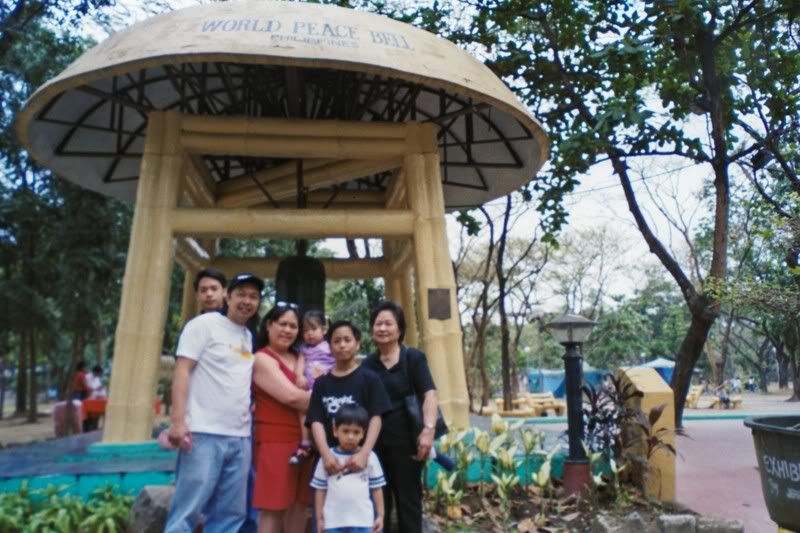
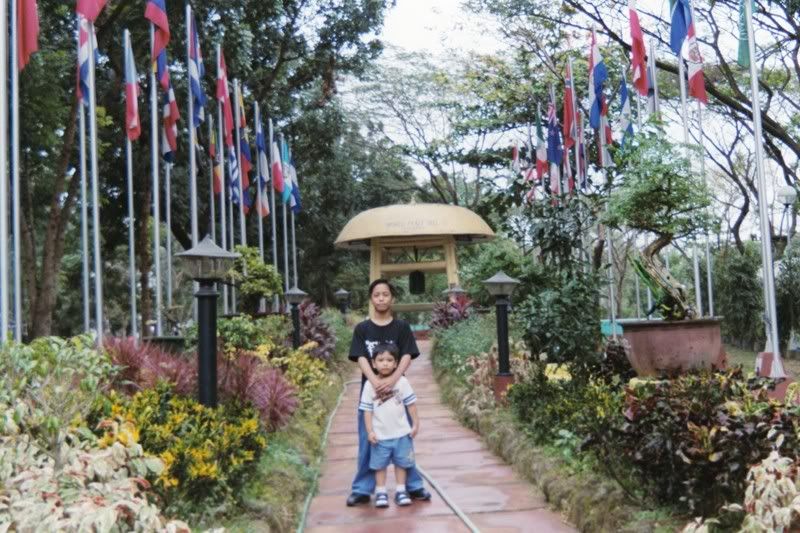


| B
E
L
L |  December 10, 1994 - World Peace Bell, Quezon Memorial Park, Quezon Memorial Circle, Quezon City (Philippines). Inaugurated at dawn on Human Rights Day by President Ramos. One of 20 WPB's place in 16 different countries by the World Peace Bell Association of Tokyo (Japan). December 10, 1994 - World Peace Bell, Quezon Memorial Park, Quezon Memorial Circle, Quezon City (Philippines). Inaugurated at dawn on Human Rights Day by President Ramos. One of 20 WPB's place in 16 different countries by the World Peace Bell Association of Tokyo (Japan).  <
< |

| D
O
V
E |  Date? - Kalapati / Dove Monument, Olongapo City, New Cabalan (Philippines). "Mr. Kasanobu Miyazaki, a Japanese owner of an accounting firm in Aioi City (Japan), requested that a shrine be built where his brother, Capt. Masanobu Miyazaki, died in battle at the Zig Zag Pass. Mayor Gordon suggested instead a peace monument dedicated to the Filipino, American & Japanese lives that were lost in that battle. The monument was thus built at the junction of the national highway and the road into New Cabalan. It is surmounted by a dove of peace. This monument welcomes travelers who will pass the first barangay of Olongapo City from the province of Bataan." /// Sign says "World Peace Memorial of Olongapo City; this memorial is a tribute to the persons who perished during WWII, and is dedicated by the people of Olongapo City to World Peace, Friendship and Cooperation." Date? - Kalapati / Dove Monument, Olongapo City, New Cabalan (Philippines). "Mr. Kasanobu Miyazaki, a Japanese owner of an accounting firm in Aioi City (Japan), requested that a shrine be built where his brother, Capt. Masanobu Miyazaki, died in battle at the Zig Zag Pass. Mayor Gordon suggested instead a peace monument dedicated to the Filipino, American & Japanese lives that were lost in that battle. The monument was thus built at the junction of the national highway and the road into New Cabalan. It is surmounted by a dove of peace. This monument welcomes travelers who will pass the first barangay of Olongapo City from the province of Bataan." /// Sign says "World Peace Memorial of Olongapo City; this memorial is a tribute to the persons who perished during WWII, and is dedicated by the people of Olongapo City to World Peace, Friendship and Cooperation."
|


|  Date? - Peace City Monument, City Hall, Surigao (Philippines). "A symbol that Surigao is one of the peaceful city and one of the most livable city in the Philippines."
From a letter by PP Geoffrey B.W.Little JP.PHF, RC North Sydney Sunrise D9680, Dean of the Ambassadorial Chair, Rotary District Peace Communities Programme (RDPCP), 19 Sep 2007: "Dear CP Don,
You might be aware there is a wonderful Rotary Peace City Monument in front of City Hall in Surigao, just up the road from you.
They declared along with Butuan a number of years back. Congratulations on your efforts and I hope to come and visit you in my capacity as the Dean of the Ambassadorial Chair of the Rotary Peace City Project aka the Rotary District Peace Communities Programme..." Date? - Peace City Monument, City Hall, Surigao (Philippines). "A symbol that Surigao is one of the peaceful city and one of the most livable city in the Philippines."
From a letter by PP Geoffrey B.W.Little JP.PHF, RC North Sydney Sunrise D9680, Dean of the Ambassadorial Chair, Rotary District Peace Communities Programme (RDPCP), 19 Sep 2007: "Dear CP Don,
You might be aware there is a wonderful Rotary Peace City Monument in front of City Hall in Surigao, just up the road from you.
They declared along with Butuan a number of years back. Congratulations on your efforts and I hope to come and visit you in my capacity as the Dean of the Ambassadorial Chair of the Rotary Peace City Project aka the Rotary District Peace Communities Programme..."  
|

|  Date? - Rotary Peace Monument, Quezon Memorial Circle, Quezon City (Philippines). Date? - Rotary Peace Monument, Quezon Memorial Circle, Quezon City (Philippines).  
|

| S
T
A
T
U
E |  1998 - Commemorative Monument of Peace and Unity, Legislative Building, San Pedro Street, Davao City, Mindanao (Philippines). "Unveiled during the celebration of the Philippine Centennial... Depicts the peaceful relationship of the migrant and indigenous inhabitants of Davao in the last 100 years."
1998 - Commemorative Monument of Peace and Unity, Legislative Building, San Pedro Street, Davao City, Mindanao (Philippines). "Unveiled during the celebration of the Philippine Centennial... Depicts the peaceful relationship of the migrant and indigenous inhabitants of Davao in the last 100 years."
|


| S
T
A
T
U
E |  May? 2007 - Second World War Cooperative Memorial, Butuan City Library, Butuan (Philippines). Three statues representing a Filipino veteran (center), an American soldier (right) and a Japanese soldier (left). May? 2007 - Second World War Cooperative Memorial, Butuan City Library, Butuan (Philippines). Three statues representing a Filipino veteran (center), an American soldier (right) and a Japanese soldier (left).  
|
 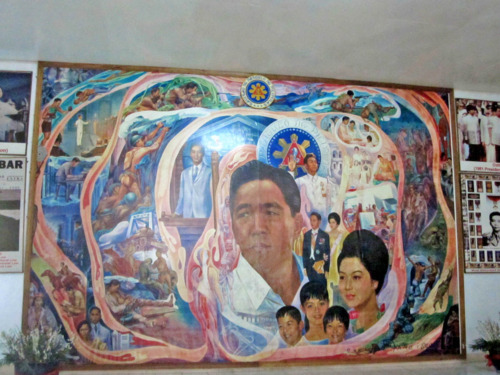

| M
U
S
E
U
M |  Date? - World Peace Center, Batac, Ilocos Norte, Luzon (Philippines). Batac is hometown of many significant figures in the history of the Philippines, including former Philippine president Ferdinand Marcos [1917-1989]. "Just near the Marcos Museum [is] Imelda Marcos’ World Peace Center - an exhibition of everything glorious about the Marcoses." Date? - World Peace Center, Batac, Ilocos Norte, Luzon (Philippines). Batac is hometown of many significant figures in the history of the Philippines, including former Philippine president Ferdinand Marcos [1917-1989]. "Just near the Marcos Museum [is] Imelda Marcos’ World Peace Center - an exhibition of everything glorious about the Marcoses."
|

 |  November 28, 2010 - Peace Monument, Barangay Sta. Maria, Zamboanga, Mindanao (Philippines). In front of Edwin Andrews Air Base. "Led by Peace Advocates Zamboanga (PAZ) & Interreligious Solidarity Movement for Peace (IRSMP)." At the dedication, one of the organizers said, "we commit to live in a new space for peace, peace within ourselves, peace among our neighbors, peace with nature & peace with our Great Provider." Local newspaper said this is "the first ever peace monument in the country... The 'First Peace Monument' was created by Tausug artist Rameer Tawasil [a Muslim]. It is shaped like a peace dove & hand extending peace." /// "Individuals, groups & institutions led by Peace Advocates Zamboanga (PAZ) & Interreligious Solidarity Movement for Peace (IRSMP) gathered yesterday to unveil a peace monument.
Fr. Angel Calvo, PAZ president, accompanied by Dr. Grace Rebollos, president of Western Mindanao State University (WMSU), & Prof. Ali Yacub, chairman of Golden Crescent Consortium of Peace Builders & Affiliates (GCCPBA) officially unveiled the first ever peace monument in the country."
November 28, 2010 - Peace Monument, Barangay Sta. Maria, Zamboanga, Mindanao (Philippines). In front of Edwin Andrews Air Base. "Led by Peace Advocates Zamboanga (PAZ) & Interreligious Solidarity Movement for Peace (IRSMP)." At the dedication, one of the organizers said, "we commit to live in a new space for peace, peace within ourselves, peace among our neighbors, peace with nature & peace with our Great Provider." Local newspaper said this is "the first ever peace monument in the country... The 'First Peace Monument' was created by Tausug artist Rameer Tawasil [a Muslim]. It is shaped like a peace dove & hand extending peace." /// "Individuals, groups & institutions led by Peace Advocates Zamboanga (PAZ) & Interreligious Solidarity Movement for Peace (IRSMP) gathered yesterday to unveil a peace monument.
Fr. Angel Calvo, PAZ president, accompanied by Dr. Grace Rebollos, president of Western Mindanao State University (WMSU), & Prof. Ali Yacub, chairman of Golden Crescent Consortium of Peace Builders & Affiliates (GCCPBA) officially unveiled the first ever peace monument in the country."
|

|  Date? - Mindanao Peace Monument, Davao City, Mindanao (Philippines). "With angel & dove, a priest, a lumad (indigenous people) & a moro (Muslim) symbolizing the three ethnic & religious pillars of multicultural Mindanao." Date? - Mindanao Peace Monument, Davao City, Mindanao (Philippines). "With angel & dove, a priest, a lumad (indigenous people) & a moro (Muslim) symbolizing the three ethnic & religious pillars of multicultural Mindanao."
|
Samoa
Right click image to enlarge.

| P
O
L
E
| 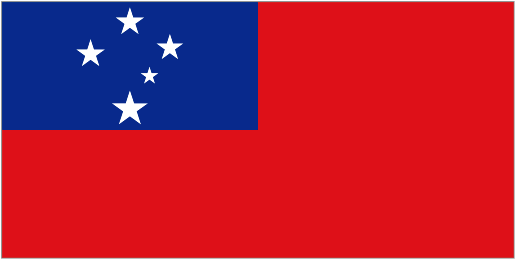  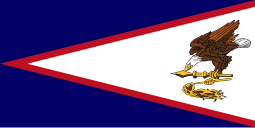 - Peace Pole in Samoa (Independent State of Samoa or American Samoa?). All information in email from 102-year old Marjorie Ewbank April 24, 2017:
"One of the things that I could have told you about [yesterday] was [John's & my] trip to Samoa. During the conference that we attended, the mayor of the town (now I can't remember the name) arranged for the celebration and planting of the PEACE POLE. All the school children, the towns people & the 200 hundred conference people gathered in a circle around the edge of a very large field. At one point the mayor and a few of the notables stayed, planted the pole and had everyone repeat "May Peace Prevail on Earth" as we marched around the edge of the circle. The words were repeated in every language of the world and the march continued for hours. It was a blistering hot day and how we all managed to survive is a mystery. There were a few trees around the edge of the circle and some folks did stop to rest." - Peace Pole in Samoa (Independent State of Samoa or American Samoa?). All information in email from 102-year old Marjorie Ewbank April 24, 2017:
"One of the things that I could have told you about [yesterday] was [John's & my] trip to Samoa. During the conference that we attended, the mayor of the town (now I can't remember the name) arranged for the celebration and planting of the PEACE POLE. All the school children, the towns people & the 200 hundred conference people gathered in a circle around the edge of a very large field. At one point the mayor and a few of the notables stayed, planted the pole and had everyone repeat "May Peace Prevail on Earth" as we marched around the edge of the circle. The words were repeated in every language of the world and the march continued for hours. It was a blistering hot day and how we all managed to survive is a mystery. There were a few trees around the edge of the circle and some folks did stop to rest."
|
Singapore
Right click image to enlarge.
 | 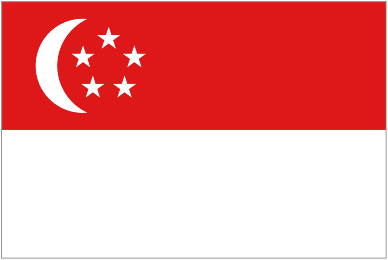 February 15, 1967 - Memorial to the Civilian Victims of the Japanese Occupation, War Memorial Park (Singapore). "One of Singapore's most famous heritage landmarks... Has also been affectionately described by some as resembling four giant chopsticks. Unseen to the eye, the remains of unidentified war victims are buried beneath the monument..." February 15, 1967 - Memorial to the Civilian Victims of the Japanese Occupation, War Memorial Park (Singapore). "One of Singapore's most famous heritage landmarks... Has also been affectionately described by some as resembling four giant chopsticks. Unseen to the eye, the remains of unidentified war victims are buried beneath the monument..."
|





| |  2005 - "Let There Be Peace," Catholic High School (Singapore). Ten-foot monument by Romanian artist Alexandra Nechita [born 1985] call the "Petite Picasso." "In November 1999, 14-year old Alexandra was selected by the World Federation of UN Associations (WFUNA) to lead a Global Arts Initiative involving more than 100 nations. In 2005, she unveiled her United Nations Peace Monument for Asia in Singapore [3rd image]." See John Lennon Peace Monument, Liverpool (England), October 2010. 2005 - "Let There Be Peace," Catholic High School (Singapore). Ten-foot monument by Romanian artist Alexandra Nechita [born 1985] call the "Petite Picasso." "In November 1999, 14-year old Alexandra was selected by the World Federation of UN Associations (WFUNA) to lead a Global Arts Initiative involving more than 100 nations. In 2005, she unveiled her United Nations Peace Monument for Asia in Singapore [3rd image]." See John Lennon Peace Monument, Liverpool (England), October 2010. 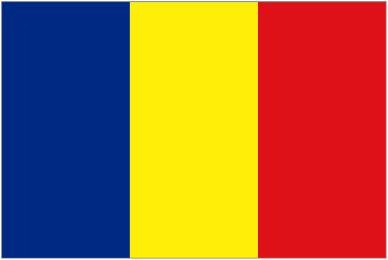 
|
Solomon Islands
Right click image to enlarge.

| 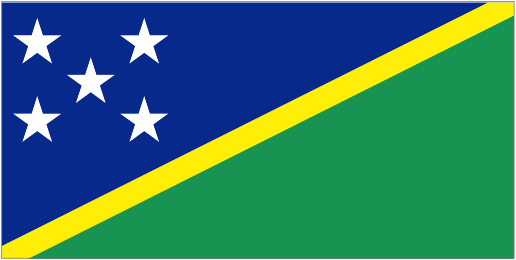 Date? - Japanese Peace Memorial, Mt Austin (1353 feet), Solomon Peace Memorial Park, Guadalcanal Island (Solomon Islands). Has view of Honiara, Iron Bottom Sound & the Florida Islands. Constructed by Japanese government. Date? - Japanese Peace Memorial, Mt Austin (1353 feet), Solomon Peace Memorial Park, Guadalcanal Island (Solomon Islands). Has view of Honiara, Iron Bottom Sound & the Florida Islands. Constructed by Japanese government. 
|
Taiwan (Republic of China)
Click here for China webpage.
Thailand
Right click image to enlarge.
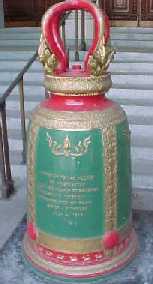
 |   1961 - Thai Bell, John Wilson District Building, Federal Triangle, Pennsylvania Avenue at 14th Street, Washington, DC (USA). Presented to the people of Washington by the people of sister city Bangkok (Thailand). 1961 - Thai Bell, John Wilson District Building, Federal Triangle, Pennsylvania Avenue at 14th Street, Washington, DC (USA). Presented to the people of Washington by the people of sister city Bangkok (Thailand). 
|
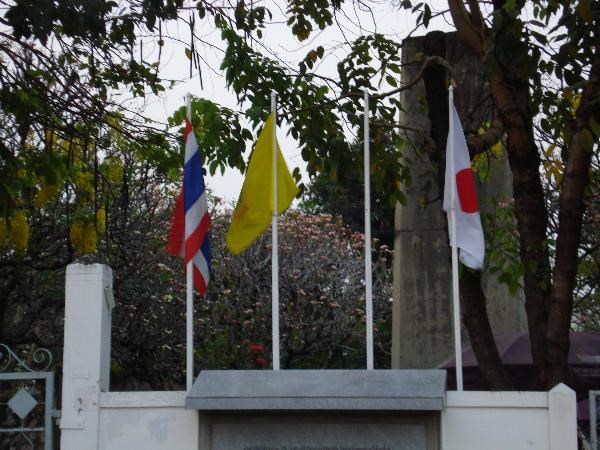 |  Date? - Japanese Peace Park, Kanchanaburi (Thailand). Near the Kwai River. Includes peace pole. "Visitors come from all over the world to see the famous Bridge On the River Kwai. Perhaps they also visit Hellfire Pass about 30km away. Most make time to visit the war cemetery dedicated to the fallen soldiers of the ANZACS armies. But few notice the little garden tucked away behind ancient gates that is home to a sadly neglected monument erected by the Japanese army in 1944. On my second trip to Kanchanaburi I stumbled upon the park & while walking around the monument I came upon this peace pole that has been a more recent addition. Was glad to see a peace pole in a place that was the scene of so much of the war." Date? - Japanese Peace Park, Kanchanaburi (Thailand). Near the Kwai River. Includes peace pole. "Visitors come from all over the world to see the famous Bridge On the River Kwai. Perhaps they also visit Hellfire Pass about 30km away. Most make time to visit the war cemetery dedicated to the fallen soldiers of the ANZACS armies. But few notice the little garden tucked away behind ancient gates that is home to a sadly neglected monument erected by the Japanese army in 1944. On my second trip to Kanchanaburi I stumbled upon the park & while walking around the monument I came upon this peace pole that has been a more recent addition. Was glad to see a peace pole in a place that was the scene of so much of the war."

|
 |  Date? - Peace Cafe, Kanchanaburi (Thailand). Date? - Peace Cafe, Kanchanaburi (Thailand).
|


 |  Date? - Suan Santi Phap / Peace Park, Ratchawitee Road, Bangkok (Thailand). Close to Victory Monument. Text of sign: "This area is about 20 Rais & was the original location of the government housing estate, where a rather small public park for people to relax & exercise. It was built on later time by Bangkok metropolitan administration. The park has been named Suan Santi Phap in order to commemorate the final day of the World War II on the 16th August 1945, which is regarded as the peaceful day of mankind. The letter type of the park name is Buddha that Bhikku’s handwriting. In the park there is a sculpture of a bird holding a bunch of olive in its beak, which means the peace of the world. Its sculptural style comes from the work of a Spanish artist Picasso. The park has a natural wood garden atmosphere with most of perennial trees. There are three ponds in the centre of the park surrounded by footpaths & roads for jogging. [sic]" Date? - Suan Santi Phap / Peace Park, Ratchawitee Road, Bangkok (Thailand). Close to Victory Monument. Text of sign: "This area is about 20 Rais & was the original location of the government housing estate, where a rather small public park for people to relax & exercise. It was built on later time by Bangkok metropolitan administration. The park has been named Suan Santi Phap in order to commemorate the final day of the World War II on the 16th August 1945, which is regarded as the peaceful day of mankind. The letter type of the park name is Buddha that Bhikku’s handwriting. In the park there is a sculpture of a bird holding a bunch of olive in its beak, which means the peace of the world. Its sculptural style comes from the work of a Spanish artist Picasso. The park has a natural wood garden atmosphere with most of perennial trees. There are three ponds in the centre of the park surrounded by footpaths & roads for jogging. [sic]"
|

| M
U
S
E
U
M |  1993 - Thai Labour Museum, 503/20 Nikommakkasan Road, Ratchatewi, Bangkok (Thailand). See Video.
"First museum in Thailand to tell the story of working-class people. Divided into 6 rooms which demonstrate the development of Thai labor from the serf (slave) period up until the present day. There are murals depicting the evolution of working conditions and many displays of actual machinery used in these times. Admission is free, but visitors are requested to call in advance." 1993 - Thai Labour Museum, 503/20 Nikommakkasan Road, Ratchatewi, Bangkok (Thailand). See Video.
"First museum in Thailand to tell the story of working-class people. Divided into 6 rooms which demonstrate the development of Thai labor from the serf (slave) period up until the present day. There are murals depicting the evolution of working conditions and many displays of actual machinery used in these times. Admission is free, but visitors are requested to call in advance."
|

| B
R
I
D
G
E |   April 8, 1994 - Thai-Lao Friendship Bridge, Mekong River (Thailand & Laos). Connects
Nong Khai (Thailand) & Vientiane (Laos). "With a length of 1,170 m, the bridge has two 3.5 m-wide road lanes, two 1.5 m-wide footpaths and a single metre gauge railway line in the middle, straddling the narrow central reservation." April 8, 1994 - Thai-Lao Friendship Bridge, Mekong River (Thailand & Laos). Connects
Nong Khai (Thailand) & Vientiane (Laos). "With a length of 1,170 m, the bridge has two 3.5 m-wide road lanes, two 1.5 m-wide footpaths and a single metre gauge railway line in the middle, straddling the narrow central reservation."
|
 |  April 2005 - "Building Commuinities of Peace for All," Chiang Mei (Thailand). By Artists Ugatiahi Collective. April 2005 - "Building Commuinities of Peace for All," Chiang Mei (Thailand). By Artists Ugatiahi Collective.
|


 |  February 23, 2006 - Pattaya Peace Park, Queen Sirikit Park, Pratumnak Hill, Pattaya (Thailand). Contains Rotary Peace Monument. Pattaya is "First Rotary Peace City in Thailand." Click here for series of similar Rotary monuments in various countries, all using same design from Wagga Wagga, New South Wales (Australia). February 23, 2006 - Pattaya Peace Park, Queen Sirikit Park, Pratumnak Hill, Pattaya (Thailand). Contains Rotary Peace Monument. Pattaya is "First Rotary Peace City in Thailand." Click here for series of similar Rotary monuments in various countries, all using same design from Wagga Wagga, New South Wales (Australia).  
|
 | B
U
D
D
H
A |  January 2009 - Jade Buddha for Universal Peace," Great Stupa of Universal Compassion, Sanhurst Town Road, Myers Flat, Victoria (Australia). Carved by Jade Thongtavee Company in Thailand from
a rare boulder of translucent jade
("Polar Pride") which was discovered
in Canada in 2000. "Perhaps the largest and
most beautiful Buddha carved from
gemstone quality jade. Including
lotus and throne, over 3.5 metres (11.4 feet) tall... Inspired by
the most famous Buddha in the world
inside the Mahabodhi Stupa in Bodh Gaya (India)." On world tour 2009-2010. Image made in Huntington Beach, California (USA), in October 2010. January 2009 - Jade Buddha for Universal Peace," Great Stupa of Universal Compassion, Sanhurst Town Road, Myers Flat, Victoria (Australia). Carved by Jade Thongtavee Company in Thailand from
a rare boulder of translucent jade
("Polar Pride") which was discovered
in Canada in 2000. "Perhaps the largest and
most beautiful Buddha carved from
gemstone quality jade. Including
lotus and throne, over 3.5 metres (11.4 feet) tall... Inspired by
the most famous Buddha in the world
inside the Mahabodhi Stupa in Bodh Gaya (India)." On world tour 2009-2010. Image made in Huntington Beach, California (USA), in October 2010.   
|
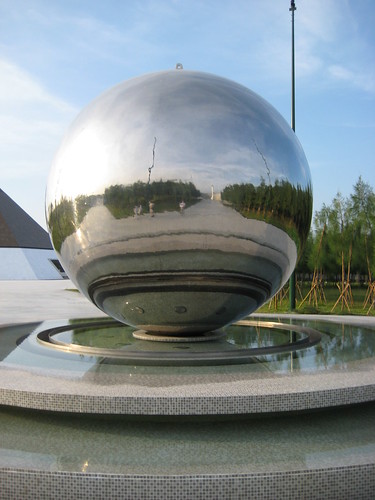
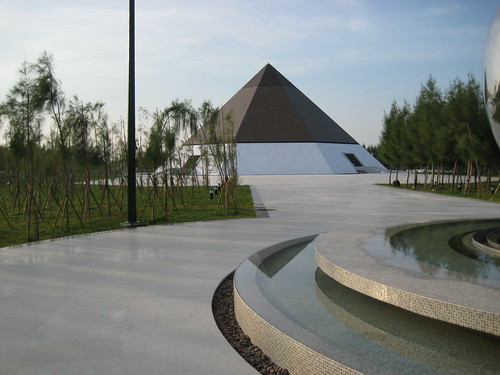
 |  Date? - Luang Pu Memorial Sphere, Songphinong (Thailand). "Another symbol, very familiar to meditators, that of a giant sphere. Beyond the sphere lies the memorial hall [pyramid], though it was not yet complete... A major site associated with Bhikkhu Sodh Candasaro, widely known as the great meditation master, Luang Phor Wat Paknam (or Luang Pu Wat Paknam), who rediscovered the Dhammakaya method of meditation." Date? - Luang Pu Memorial Sphere, Songphinong (Thailand). "Another symbol, very familiar to meditators, that of a giant sphere. Beyond the sphere lies the memorial hall [pyramid], though it was not yet complete... A major site associated with Bhikkhu Sodh Candasaro, widely known as the great meditation master, Luang Phor Wat Paknam (or Luang Pu Wat Paknam), who rediscovered the Dhammakaya method of meditation."
|
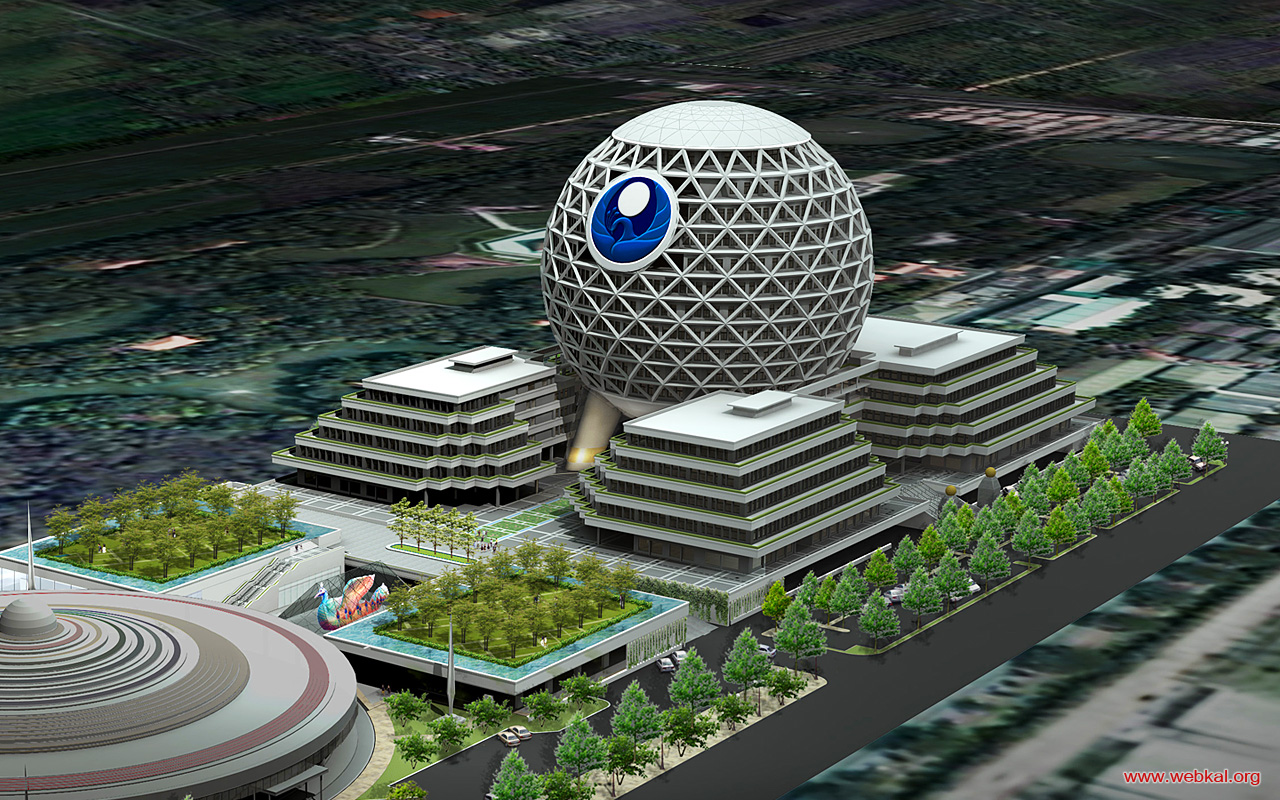
 |  2012 - Office building, Pathum Thani Province (Thailand).
Office Space: 80,000 sq.m., Height: 95 meters. 2012 - Office building, Pathum Thani Province (Thailand).
Office Space: 80,000 sq.m., Height: 95 meters.
|
 |  Future - P-P Peace Park, where? (Thailand)."The sculptural landmark of The P-P Peace Park, characterful presence on the newly created public park represents the symbol of peace, and love that concerned in the context of climate changes and global warming. The dynamic form responds to the uniqueness of its location, adjacent to the waterfront through creating tranquility and intimacy. From the surrounding area, this proposed project is perceived as a sculptural landmark of the region." Monument designed by Khiensak Seangklieng. Future - P-P Peace Park, where? (Thailand)."The sculptural landmark of The P-P Peace Park, characterful presence on the newly created public park represents the symbol of peace, and love that concerned in the context of climate changes and global warming. The dynamic form responds to the uniqueness of its location, adjacent to the waterfront through creating tranquility and intimacy. From the surrounding area, this proposed project is perceived as a sculptural landmark of the region." Monument designed by Khiensak Seangklieng.
|
Vietnam
Right click image to enlarge.
 |  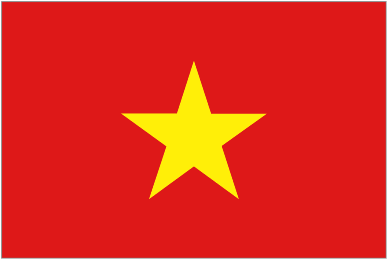 Date? - Friendship Gate, Pingxiang (China) & Langson (Vietnam). Ancient gate on border between China & Vietnam. "On February 23, 2009, a ceremony marking the completion of land border demarcation between China and Vietnam was held at the Youyiguan border gate in Pingxiang City in South China's Guangxi Zhuang Autonomous Region." Date? - Friendship Gate, Pingxiang (China) & Langson (Vietnam). Ancient gate on border between China & Vietnam. "On February 23, 2009, a ceremony marking the completion of land border demarcation between China and Vietnam was held at the Youyiguan border gate in Pingxiang City in South China's Guangxi Zhuang Autonomous Region."
|

| B
R
I
D
G
E |  1593 - Friendship Bridge, Hòa An (Vietnam). "Links the old Chinese and Japanese sides of the canal." "During the period of the China trade (16th-17th century), the town was called Hai Pho (Seaside Town) in Vietnamese. Originally, Hai Pho was a divided town with the Japanese settlement across the "Japanese Bridge." The bridge (Chùa cau) is a unique covered structure built by the Japanese, the only known covered bridge with a Buddhist pagoda attached to one side." 1593 - Friendship Bridge, Hòa An (Vietnam). "Links the old Chinese and Japanese sides of the canal." "During the period of the China trade (16th-17th century), the town was called Hai Pho (Seaside Town) in Vietnamese. Originally, Hai Pho was a divided town with the Japanese settlement across the "Japanese Bridge." The bridge (Chùa cau) is a unique covered structure built by the Japanese, the only known covered bridge with a Buddhist pagoda attached to one side."  
|

|  Date? - John McCain Monument, Truc Bach Lake, Hanoi (Vietnam). Inscription: "Here on 26 October 1967 at Truc Bach Lake in the capital city of Ha Noi, John Sidney McCain was shot out of the sky in his A4 aircraft by local citizens' militia defending Yen Phu. There were 10 other planes shot down on the same day." /// "The monument is in the rough shape of a plane, or the severed head of a crucifix, with the kneeling figure of John McCain at its center. Head bowed in penitence, knees buckling, eyes hooded in shame, he looks like a man quite capable of saying, even some thirty years later, "I am a war criminal; I bombed innocent women and children" – as he did in an interview with Mike Wallace on Sixty Minutes in 1997." /// "McCain is misspelled. It's odd that there's such a big monument here, while at the War Remnants Museum in Saigon he's not mentioned (as far as a I know). If he were to be mentioned, I suspect the plaque would read, 'Our honored prisoner from America broke both of his arms learning how to use chopsticks.'" Date? - John McCain Monument, Truc Bach Lake, Hanoi (Vietnam). Inscription: "Here on 26 October 1967 at Truc Bach Lake in the capital city of Ha Noi, John Sidney McCain was shot out of the sky in his A4 aircraft by local citizens' militia defending Yen Phu. There were 10 other planes shot down on the same day." /// "The monument is in the rough shape of a plane, or the severed head of a crucifix, with the kneeling figure of John McCain at its center. Head bowed in penitence, knees buckling, eyes hooded in shame, he looks like a man quite capable of saying, even some thirty years later, "I am a war criminal; I bombed innocent women and children" – as he did in an interview with Mike Wallace on Sixty Minutes in 1997." /// "McCain is misspelled. It's odd that there's such a big monument here, while at the War Remnants Museum in Saigon he's not mentioned (as far as a I know). If he were to be mentioned, I suspect the plaque would read, 'Our honored prisoner from America broke both of his arms learning how to use chopsticks.'" 
|

|  1998 - My Lai Peace Park, My Lai (Vietnam). A project of the Madison Quakers.
Site of the My Lai Massacre by a unit of the US Army on March 16, 1968, of 347–504 unarmed citizens, all of whom were civilians and a majority of whom were women, children (including babies) and elderly people. 1998 - My Lai Peace Park, My Lai (Vietnam). A project of the Madison Quakers.
Site of the My Lai Massacre by a unit of the US Army on March 16, 1968, of 347–504 unarmed citizens, all of whom were civilians and a majority of whom were women, children (including babies) and elderly people. 
|

|   April 25, 2009 -
Vietnamese Boat People Monument, Westminster, Orange County, California (USA). Memorializes the tens of thousands who died in the high seas as they tried to escape communist Vietnam after the Fall of Saigon in April 1975. Built by Cam Ai Tran and Hap Tu Thai who escaped from Vietnam in 1979 by a boat which capcized, forcing them to swim ashore near Hai Nam Island in the South China Sea. April 25, 2009 -
Vietnamese Boat People Monument, Westminster, Orange County, California (USA). Memorializes the tens of thousands who died in the high seas as they tried to escape communist Vietnam after the Fall of Saigon in April 1975. Built by Cam Ai Tran and Hap Tu Thai who escaped from Vietnam in 1979 by a boat which capcized, forcing them to swim ashore near Hai Nam Island in the South China Sea. 
|







1954 - "Phoenix of Hiroshima," North Fork of Mokelumne River, off Tyler Island, Lodi, California (USA?). "John Gardner (phoenixofhiroshima @comcast.net, 209-570-4070) has already rescued the Phoenix after seeing it listed for free on craigslist [in late 2006 or early 2007], its San Francisco owner simply wanting to get rid of it to avoid paying any more fees to the Oyster Point Marina. Gardner paid a San Francisco boater to tow it to its current location." Constructed in Hiroshima (Japan) by American Quaker Earle Reynolds [1910-1998] (top image). "1954 brought the realization of a dream for Reynolds when he, his first wife Barbara Leonard Reynolds [1915-1990], and their three children began an around the world voyage on the Phoenix. They stopped at over one hundred ports, and Earle gave lectures on conditions in Hiroshima. Young Jessica [middle image] documented this trip in her book, which was later published [1958]. When they arrived in Hawaii in 1958, they met the crew of the Golden Rule (qv), Quakers who were on trial for their attempt to sail into the nuclear test zone near Bikini Island to protest nuclear weapons and atmospheric testing. They had been arrested and prevented from completing their mission. After talking with the crew of the Golden Rule, Dr. Reynolds and his family decided to complete the mission in their place. He also believed that the government did not have a right to restrict access to the open ocean. After sailing into the restricted zone, he was arrested and sentenced to two years in prison. This verdict was appealed and eventually overturned." Earle Reynolds founded the Peace Resource Center at the University of California at Santa Cruz (UCSC) in 1975. Barbara Reynolds founded the World Friendship Center in Hiroshima (Japan) in 1965 and the Peace Resource Center at Wilmington College, Ohio, in 1975.






1958? - "Golden Rule," Eureka, California (USA). Now out of water and for sale by Leon Zerlang (humtug@gmail.com). Asking price is $9,500. Email Jan. 19, 2010 from Wendy E. Chmielewski, PhD, George Cooley Curator, Swarthmore College Peace Collection, Swarthmore. Pennsylvania (USA): "The sailing ship that in 1958 [Quakers] Albert Bigelow [1906-1993], James Peck [1914-1993], George Willoughby [1914-2010] (who just passed away two weeks ago), attempted to sail into the atomic testing grounds near the Marshall Islands. The ship has been repossessed by Leon Zerlang, the ship yard owner (from the bankrupt actual owner). Leon is aware of the ship's history and would like to help save The Golden Rule, but needs ideas and help on what to do to save this ship. Several years ago I received an almost identical email from another ship owner trying to save The Phoenix (qv), a sailing ship with a similar history. I don't know the fate of The Phoenix. It would be a shame to lose still another piece of peace movement history. Ideally something like The Golden Rule, a beautiful sailing ship, should be preserved by the Smithsonian, but I don't know that they have any interest in it." Right image shows Earle Reynolds [1910-1998], his second wife Akie Nagami, Phil Drath, Betty Boardman, Bob Eaton, Horace Champhy, and Ivan Massar embarking from Misaki, Kanagawa (Japan) on February 16, 1967, en route to North Vietnam with medical supplies. "In 1959, Bigelow published a book, "Voyage of the Golden Rule: An Experiment with Truth," which documented his journey. The story would go on to inspire fellow Quaker Marie Bohlen to suggest the use of a similar tactic to members of the Vancouver-based Don't Make a Wave Committee (later to become Greenpeace) in 1970."

July 4, 1982 - "Behold the Sea," Mendocino, California (USA). Sister city plaque for Mendocino & Miasa, Nagano (Japan). "At the tip of the peninsula." Sister city "relationship formed in 1980 due to the friendship of Mendocino artist Bill Zacha & Japanese artist Toshi Yoshida." Inscription (in Japanese & English): "The citizens of the sister cities of Mendocino and Miasa, Japan dedicate this plaque to the peaceful pursuits of the peoples of the Pacific Basin and to the protection of its environment that all living things there-in may exist in perpetual harmony." Information courtesy of Jill Hoyles 26Apr2015.








1987 - Japanese Peace Monument, Attu Island, Aleutian Islands, Alaska (USA). Erected by Japan at site of only battle on US soil during World War II.



Future - Intercontinental Peace Bridge, Bering Strait between Cape Dezhnev, Chukotka (Russia) & Cape Prince of Wales, Alaska (USA). Also known as the Eurasia-America Transport Link. Proposal supported by the Schiller Institute, Sun Myung Moon & others.




September 6, 1921 - International Peace Arch, Peace Arch Park, US/Canadian Border, Blaine, Washington (USA), & Douglas, British Columbia (Canada). On major highway & railroad between Seattle & Vancouver. Commemorates the centennial of the Treaty of Ghent which ended the War of 1812 between the US & Great Britain. Built by road builder Sam Hill [1857-1931]. Click here for the Wikipedia article. 1 of 40 monuments in "Peace Symbols" by Zonia Baber (1948), pp. 60-61. Entry #1211 in the "Peace Movement Directory" by James Richard Bennett (2001).
A Kiwanis marker will be added to this site in 1936 [qv] & supplemented with a second marker in 1965 [qv].


May 9, 1924 - Painting of President Harding in Stanley Park, Washington, DC (USA) - "Warren Gamaliel Harding doesn't get much respect these days. It's a far cry from the day Harding came to Vancouver on July 26, 1923 [and] 30,000 to 40,000 people heard [him] speak in Stanley Park... The president was reported to be in a 'good humoured mood' at dinner before he left the city to board the USS Henderson & sail to Tacoma. His mood may have darkened when the Henderson ran into another ship about 8 a.m. the next morning in a foggy Puget Sound. Or he may not have noticed, because he had already fallen deathly ill... Vancouverites were shocked at the news [of his death]. The Kiwanis Club put up the funds for a Harding memorial by [Vancouver] sculptor Charles Marega [1871-1939], which was unveiled in Stanley Park on Sept. 16, 1925. But the Vancouver Sun had scooped the Kiwanis Club by commissioning its own memorial painting a year earlier. Publisher Robert Cromie paid 'the Remington of the Canadian West,' John Innes [1863-1941], the princely sum of $1,000 to come up with an epic vision of Harding beguiling the masses in Stanley Park. It's a fairly romantic scene - Harding extends his arms 'in fraternal greeting' to the crowd, surrounded by a lush green forest... The painting was presented to the National Press Club in Washington on May 9, 1924, and was accepted on behalf of the United States by Harding's successor, Calvin Coolidge... [It] was passed on to the US National Museum, which had it on display until 1958, when it went into storage.... Harding memorabilia doesn't have much demand these days, because a series of scandals after Harding's death took a heavy toll on his reputation..."





September 16, 1925 - Harding International Good Will Memorial, Stanley Park, Vancouver, British Columbia (Canada). "More than 12,000 people gathered...to dedicate a memorial to former US President & Marion, Ohio, Kiwanian Warren G. Harding. But rather than dwell on the president’s unexpected death, the monument also celebrated the goodwill that exists between Kiwanis’ two founding nations. Two bronze figures, representing the USA & Canada, stand on the memorial, each holding an olive branch of peace. Beside them is a plaque that quotes Harding’s 1923 speech. /// "The Kiwanis Club initiated a drive for a grand memorial to Harding in Stanley Park, at the site where he spoke [in 1923]. The monument was designed by Vancouver sculptor Charles Marega (also a Kiwanian)." /// US President Warren G. Harding [1865-1923] died not long after visiting Vancouver to dedicate this monument. Click here for YouTube video. 1 of 40 monuments in "Peace Symbols" by Zonia Baber (1948), pp. 64-65. Entry #1241 in the "Peace Movement Directory" by James Richard Bennett (2001).



November 11, 1928 - Canadian Memorial Chapel (United Church & Centre for Peace), 1806 West 15th Avenue, Central Vancouver, British Columbia (Canada). "The inspiration of Rev George Fallis, a chaplain during [World War I], who also raised most of the money for the building & was minister until 1933. It features a set of 10 stained-glass windows, one for each of the 9 provinces (Newfoundland was not yet a part of the federation) & the Yukon." /// "Join us for music, memories, and reflection in our unique chapel built for peace in honour of those who gave their lives in [World War I]. View the only copies of the [seven] Books of Remembrance outside of Ottawa and perhaps find family members who gave their lives in hope of peace. Reflect with wonderful instrumentalists as musical accompaniment in this sanctuary for peace. All welcome, all free, refreshments served."





April 25, 1936 - Kiwanis Peace Plaque, adjacent to Peace Arch, directly on border, between Blaine, Washington (USA) & Surrey, British Columbia (Canada). 1 of 13 named by Baber after Ambassdor Bridge. 1 of 13 in Entry #1207 "Peace Movement Directory" by Bennett (2001). /// "United Divide: A Linear Portrait of the USA/Canada Border" says "There are monuments and plaques of all kinds [at this site]. Some discuss historical points about the boundary, others simply commemorate commemoration... The local Kiwanis Club monument, commonly found at crossings, dated 1936, and saying 'This unfortified boundary line between the Dominion of Canada and the United States of America should quicken the remembrance of the more than century old friendship between these countries a lesson peace to all nations.'" /// Note lower plaque added November 28, 1965. /// Marker visible in air view just to left of the Peace Arch.





Date? - Kiwanis Peace Monument & Plaque, at border crossing on Highway 31 between Nelway, British Columbia (Canada) & Metaline Falls, Washington (USA). "United Divide: A Linear Portrait of the USA/Canada Border" says "The first of 13 official road crossings in Washington. The border comes over a cliff from the east, and drops across the crossing. It passes through the Kiwanis club plaque, a common feature of the border, and through the International Boundary Commission (IBC) monuments..." /// Location of undated upper left image from IUPUI archives not determined, but it names sponsoring clubs in NE Washington state & bears this caption: "Kiwanis officials stand by a U.S.-Canada Peace Marker erected by various clubs of the Pacific Northwest District. Pictured (left to right) are: Pacific Northwest District Governor J. N. Emerson, International Trustee R. George McCuish, Tablet Committee Chairman Dr. E. N. Dayton, Table Committee Member Dan Droz, Division Six Lieutenant Governor Oscar W. Nelson, and Past International Trustee A. H. Synison." /// Undated upper right image is from Washington State Library; caption says "Pickup truck under the canopy of the Canadian Nelway border crossing station. A monument is visible on the right side of the photograph." /// Lower left image is blown up from lower right image; Kiwanis monument is directly behind the IBC monument.





June 3, 1939 - Kiwanis Peace Monument & Plaque, Paterson/Frontier Border Crossing, Paterson, British Columbia (Canada). Info & images from Karen Struve, Colville, Washington, 29March2016. Middle image shows Kiwanian Tom Dodson (age 92) at the Kiwanis monument on 25March2016. Right image is press photo showing 2 girls (one from each country) who helped dedicate the monument in 1939 at a ceremony attended by 8,000 people. Dodson's wife Shirley Wyley Dodson (then age 14) is the girl at left. Dodson added the small stone in 1989 to increase the number of sponsoring Kiwanis clubs from 12 to 17. /// In email from Dodson 02April2016: "The plaque appears to be brass but is actually painted gold, and to my knowledge it has never been painted since the dedication in 1939... The monument has been moved twice as the road was changed and may be moved again as we were told there is a chance the [Canadian] building will be replaced." /// Also reported in Spokane Daily Chronicle, June 5, 1939.




October 12, 1947 - Kiwanis Peace Marker, Porthill, Idaho (USA). Opposite Rykerts British Columbia (Canada). Image & text from The Spokesman-Review of Spokane, Washington, Oct. 14, 1947: "Peace Marker Dedicated Near Porthill. Governor C.A. Robins of Idaho (left) shakes hands with Sqd. Leader N.C. McLeod, aide-de-camp of the Canadian lieutenant governor general in front of the Kiwanis International peace marker dedicated Sunday on the international boundary of Canada and the United States near Porthill, Idaho. The stone marker is the 22d such marker placed on the 3000-mile border between the two countries by the Kiwanis club...." This article is the only information found after identifying this marker from the 1961 list of Kiwanis markers identified at top of this webpage. Right image shows former (1947?) US inspection station at Porthill.




September 26, 1948 - Kiwanis Peace Marker, between Eastport, Idaho (USA) & Kingsgate, British Columbia (Canada). From The Spokesman-Review of Spokane, Washington, Sept. 23, 1948: "Bonners Ferry, Idaho, Sept. 22. (AP)--The marker...will rest on a base in which will be placed a stone from each of the 48 states, the District of Columbia and the five provinces of Canada [sic]... A bronze marker identifying the source will be place in front of each stone... The program is being sponsored by the Kiwanis clubs of division 8. It will start with a parade at 1 p.m... A similar peace market [sic] was dedicated at the United States-Candadian border at Porthill, Idaho, last fall...." This article is the only written information found after identifying this marker from the 1961 list of Kiwanis markers identified at top of this webpage. Left image is from a travel blog in German.


1949 - Kiwanis Peace Plaque, Oroville, Okanogan County, Washington (USA). Upper image from IUPUI archives with this caption: "Washington Kiwanis Peace Tablet, 1949. A table [sic] memorializing the century of peace between Canada and the United States is unveiled in Okanogan, Washington in 1949. The tablet was sponsored by the clubs of Division Five of the Pacific Northwest Kiwanis District." Image shows at least 13 young women, each wearing a corsage. Note names of many sponsoring clubs on the marker (4 in BC, 6 in Washington) & a nearby IBC monument. /// Otherwise, all written info about this plaque is from a single sentence in a short undated newspaper article (from Olympia, WA) about state authorities' delaying approval of a Lions Club peace arch at the same location as a Kiwanis marker erected in 1953 [sic]. /// Bottom image shows the Canadian inspection station in 1997 with unidentifiied monument in a cluster of shrubbery.







Date? - Kiwanis Peace Plaque, on boundary between Oroville, Washington (USA) & Osoyoos, British Columbia (Canada). Upper left image shows four friendship monuments moved from perevious locations to the new joint inspection station on the border between Oroville & Osoyoos. Kiwanis plaque is at far left, followed by Canadian Legion monument, Lions Club friendship arch, Rotary Club monument, and official IBA monument on border. These monuments are small white flecks in the lower air view, on the driveway east of the building & just inside the USA.






1967 - Centennial Marker, Klondike Highway, Fraser, British Columbia (Canada). Inscribed "Erected Centennial Year, 1967." 1967 is the centennial of Canadian Confederation on July 1, 1867! /// According to Wikipedia, "Fraser, British Columbia is a location on the Klondike Highway [& White Pass & Yukon Route] railway in northwestern British Columbia. It has no permanent residents or businesses." But Fraser contains the border crossing between Skagway, Alaska, & Whitehorse, Yukon. And the marker appers to be mounted to the north wall of the railway building (note same color!). /// Upper left image ("taken on September 1, 2006, by DrLensCap [sic]") is from Flickriver. Upper right image from The Explore North Blog shows same railway building in winter. /// N.B.: This may be the only Kiwanis marker specially inscribed for an event or anything other than its date of dedication. This marker & the 1962 marker in Lewiston, NY (qv), also appear to be darker than previous Kiwanis markers (made from different kind of bronze?).

![]()

1969 - Bust of Mahatma Gandhi, between Shrum buildings, Simon Frazier University, Burnaby, British Columbia (Canada). Entry #1227 in the "Peace Movement Directory" by James Richard Bennett (2001).

1986 - Pacific Bell, University of British Columbia, Vancouver, British Columbia (Canada). Designed by Masahiko Katori [1899-1988]. Dedicated by Yasuhiro Nakasone, Prime Minister of Japan.



1987 - Inuksuk, English Bay, Vancouver, British Columbia (Canada). "This is a contemporary work created by artisan Alvin Kanak of Rankin Inlet, Northwest Territories (which is now in the territory of Nunavut that separated from the Northwest Territories in 1999). It was given as a gift to the city for Expo 86. The land has since been donated to the city, and it is now a protected site. Friendship and the welcoming of the world are the meanings of both the English Bay structure and the 2010 Winter Olympics emblem (qv). Kanak's work represents the strength of his people and the modes of communication and technology before modern Canada."


Date? - Inuksuk, Lake Windermere, Invermere, East Kootenay Region, British Columbia (Canada).


1987 - Seaforth Peace Park & Fountain, Burrard Street Bridge (south end), Vancouver, British Columbia (Canada). Click here for air view. Entry #1247 in the "Peace Movement Directory" by James Richard Bennett (2001).


![]()

1987 - Doukhobor Village Museum, 112 Heritage Way, Castlegar, Kootenay Region, British Columbia (Canada). "A reconstructon of a typical Doukhobor village, as lived in 1908-1939 showing all of the major buldings, tools, handicrafts and instruments used at the time." Has statue of Leo Tolstoy [1828-1910]. Entry #1228 in the "Peace Movement Directory" by James Richard Bennett (2001).



Date? - West Han Dynesty Bell, Shangahi Alley, Chinatown, Vancouver, British Columbia (Canada). Replica of a bell unearthed in Guangzhou in 1983. Gift from the City of Guangzhou to the City of Vancouver for the 15th anniversary of the twinning of the two cities.

![]()

1992 - Muriel Neilson Memorial Peace Garden, Bowen Island, British Columbia (Canada). Entry #1226 in the "Peace Movement Directory" by James Richard Bennett (2001).
![]()

1993 - Cumberland Peace Park, Cumberland, Bowen Island, British Columbia (Canada). Entry #1232 in the "Peace Movement Directory" by James Richard Bennett (2001).








July 4, 2003 - Kiwanis Peace Cairn & Plaque near Skagway, Alaska (USA). At border between Alaska & British Columbia. On road from Skagway to Whitehorse in the Klondike part of Yukon Turritory. Multiple Kiwanis plaques on an inuksuk with a concrete core. /// Built "with contributions of Kiwanis clubs in Canada (mostly BC) & the U.S. (mostly Washington), this stone monument on the Alaska/Canada border reads: 'This unfortified boundary line between the Dominion of Canada and the United States of America should quicken the remembrance of the more than a century old friendship between these countries, a lesson of peace to all nations.'" /// From "Pacific Northwest District Builder," September 2003, page 13: "The most unique Kiwanis Peace Marker on the U.S./Canadian border... Led by the Whitehorse, Yukon Territory club and club President Stan Marinoske, Kiwanians from the AYN Division spent the July 4th weekend building the first Peace Marker monument to be constructed on the U.S./Canadian Border in over twenty years... Located on the Alaskan side of the border at the Skagway/Fraser border crossing, the monument is a ten foot tall representation of a Inuksuk – the classic Inuit stone figure... Designed by Whitehorse Kiwanian Rob Mason, a professional architect, the monument features over 30 commemorative stones donated by other Pacific Northwest Clubs in Alaska, British Columbia, Oregon, Washington & Idaho... The four day project was several years and $10,000 in the making...." /// Is this the last of the Kiwanis peace markers?

![]()

2004 - Rotary Peace Park, Parksville, British Columbia (Canada).




Proposed in 2004 - "The Welcoming," Nelson, British Columbia (Canada). Also known as the "Draft Dodger Monument." "A 60-foot Peace-Sign base of rock & pools of water, with the '3-fingered' end of the Peace-Sign indicating the journey from all parts of the US, & where the 'Water Arches' indicate the US/Canadian border, where there is an American man & woman being welcomed by a Canadian with outstreached arms & welcoming hands." "Roughly 125,000 Americans crossed the border into Canada during the 1960's & 1970's because of their opposition to the Vietnam War. Many settled in the Nelson area... The plan got the attention of FOX-TV News in the US & has come under fire from Americans, veterans groups & some Canadian politicians. As a result of the criticism, the city of Nelson, afraid of alienating US tourists, has distanced itself from the proposal." "More recently, servicemen deserting from America's war with Iraq have found their way to Nelson."


![]()

Date? - Marine Peace Park, 750 Marine Park Drive NE, Salmon Arm, British Columbia (Canada). "Located at the wharf on the shores of Shuswap Lake. The park is the site of WOW (Wednesday on the wharf) a wonderful community attraction. This site is also a great location for weddings. The Raven Trail connects Marine Park to the Raven subdivision along the scenic Salmon Arm Bay waterfront."

Summer 2007 - Ambassador of Peace Monument, Central Park, Burnaby, British Columbia (Canada). Also known as Kapyong Korean War Memorial. "Recognizes the 36 servicemen from British Columbia who made the supreme sacrifice during the Korean War 1950/53 & during the Peacekeeping period 1953/56. Their names will be engraved on the Central Park Memorial, including rank, surname, given Names, decorations & unit. Total Canadian casualties were 516 killed, 1558 wounded, & countless others suffer from post traumatic stress syndrome. Approximately 100 servicemen from British Columbia were wounded during the Korean War. Korea remains as Canada’s third bloodiest war, after WWI & WWII & just ahead of the South African War, the last colonial war more than a century ago. Canadian servicemen & women are putting their lives in harm’s way at this very moment in Afghanistan. The Korean War, often called the Forgotten War, is worthy of a thought or two by Canadians." Click here for the Battle of Kapyong. Photo made on June 25, 2011.




2010 - Statue of Ilanaaq the Inunnguaq, top of the Whistler Village Gondola, Whistler Blackcomb Resort, Whistler, British Columbia (Canada). Mascot of the 2010 Winter Olympics. "The basis of the logo of the 2010 Winter Olympics [right image] designed by Vancouver artist Elena Rivera MacGregor. Its use has been controversial, both among the Inuit and the First Nations of British Columbia. Although the design has been questioned, people believe it pays tribute to the inuksuk that stands at Vancouver's English Bay."


October? 2004 - "Bird of Peace," Sanderson Park, Phnom Penh (Cambodia). Commissioned by Australian Embassy. Made out of old guns and weapons that had been used by the Khmer Rouge.




September 27, 2007 - "World of Peace," Kompong Thom (Cambodia). "Depicts three catfish with a globe balancing on the nose of the highest leaping fish." Made out of old guns and weapons that had been used by the Khmer Rouge.



October 9, 2007 - "Naga for Peace & Development," Batambang (Cambodia). "I followed the river down to a large square surrounding a large metal sculpture of (you guessed it) Naga. As I approached the statue, it began to look a little bizarre, as if crafted from many small pieces. It turns out that the large statue is made out of old guns and weapons that had been used by the Khmer Rouge."

May 19, 2002 - International People's Park (IPP), Dili (East Timor). "Park & its monument in central Dili [were] inaugurated by United Nations Secretary-General Kofi Annan in the presence of many dignitaries." /// "In 1999, following the United Nations-sponsored act of self-determination, Indonesia relinquished control of the territory, & East Timor became the first new sovereign state of the 21st century on May 20, 2002."




Date? - Pacific Peace Memorial Park, just off Marine Corps Drive, Mataguac (US Territory of Guam). Dedicated to those lost their lives during World War II. Near the battle site between Japanese and American soldiers. /// "This memorial was erected by a Japanese group to commemorate all those who died on Guam during World War II. It is located the site of the last Japanese command post. Although the island was basically secure, General Obata, Commander of the Japanese forces was still holed up in his command post. It was stormed by American troops on August 12, 1944. Rather than surrender, General Obata committed suicide in his bunker."




May 18, 2008 - Agat Peace Memorial Monument, Agat (US Territory of Guam). "A pacifist organization of Japanese nationals living on Guam [Peace Ring of Guam] has erected a cenotaph to commemorate the deaths of tens of thousands of people there during World War II... It is engraved with the kanji for 'wa,' meaning peace, rendered by the late Shoichi Yokoi [1915-1997], a Japanese soldier who hid in the jungle on Guam until 1972 without knowing the war was over. It also bears the message 'Peace is everything' in the Chamorro language."




January 16, 2010 - "Peace Monument," Tamuning Park, Tamuning (US Territory of Guam). "Soka Gakkai International (SGI) members from Guam, the US mainland, Oceania & Japan gathered to mark the 35th anniversary of the establishment of SGI (January 26, 1975) [and] to unveil a monument dedicated to the SGI's founding & to world peace. On one side of the monument are the opening lines from Mr. Ikeda's novel, The Human Revolution: 'Nothing is more barbarous than war. Nothing is more cruel. And yet, the war dragged on.' On the opposite side are the opening lines from The New Human Revolution: 'Nothing is more precious than peace. Nothing brings more happiness. Peace is the most basic starting point for the advancement of humankind.' In the center of the monument are words from Mr. Ikeda, stating 'Rather than seeking after your own praise or glory, I hope that you will dedicate your noble lives to sowing the seeds of peace throughout the entire world. I shall do the same.'"


1813 - Ahu'ena Heiau, Kailua-Kona, Hawaii (USA). Heiau / temple dedicated to Lono, Hawaiian God of peace, agriculture and prosperity. Reconstructed by King Kamehameha the Great [d. May 8, 1819]. On the register of National Historic Landmarks as one of the most important of Hawaii's historic sites. Visited by EWL.


1962 - USS Arizona Memorial Musuem, National Park Service (NPS), 1 Arizona Memorial Place, Pearl Harbor, Honolulu, Oahu Island, Hawaii (USA). "The underwater USS Arizona serves as the final resting place for many of the battleship's 1,177 crew members who lost their lives on December 7, 1941." One of 27 US museums in "Museums for Peace Worldwide" edited by Kazuyo Yamane (2008).





Christmas Day, December 1963 - Peace Corps Memorial Monument, Old Hilo County Hospital site near Rainbow Falls, Hilo, Big Island (Hawaii). "Upon learning of Kennedy's assassination November 22, 1963, members of the the Peace Corps Training Center donated a dollar apiece from their $10.50 weekly salary to pay for a bronze plaque bearing the words, 'And So, My Fellow Americans, Ask Not What Your Country Can Do For You, Ask What You Can Do For Your Country,' from his inaugural address."





About 1970 - Peace Bell, Byodo-In Temple, Valley of the Temples, Oahu Island, Hawaii (USA). Temple completed June 7, 1968, & is a replica of Byodo-in Temple which was originally built in 998 in the city of Uji, Kyoto Prefecture (Japan). Another replica served as Japan's official exhibit at the World's Columbian Exposition in Chicago in 1893.





After 1972? - Bell Tower, Golden Bamboo Grove, Nani Mau Gardens, 421 Makalika Street, Hilo, Big Island of Hawaii, Hawaii (USA). "Japanese style bell tower crafted from 20,000 boards without utilizing any nails or screws. One of only 3 towers built utilizing this technique in the world. The other two are located in Canada and France." In botanical garden established by Makato Nitahara and opened to the public in 1972.





1985 - Hiroshima Peace Bell, Izumo Taisha Mission, North Kukui Street, Honolulu, Hawaii (USA). Said to be a replica of the Hiroshima Peace Bell (qv). Hiroshima & Honolulu are sister cities.




1986 - Hawaii Peace Memorial, Kennedy Theatre, Manoa Campus, University of Hawai`i, Honolulu, Hawai`i (USA). Granite monument commemorates Japanese immigration to Hawai‘i. Click here for a PowerPoint presentation.




October 27, 1990 - Statue of Mahatma Gandhi, Kapiolani Park, Honolulu, Hawaii, California (USA). Given to the city by the Gandhi Memorial International Foundation, a non-profit organization run by Yogesh K. Gandhi.


December 7, 1990 - Nagasaki Peace Bell, Honolulu Hale (City Hall), Honolulu, Hawaii (USA). Western style bell. Photo shows release of doves in mourning for loss of life due to the collision of the submarine USS Greenville with the Japanese fishing boat Ehime Maru on February 9, 2001.



Date? - Paleaku Peace Gardens Sanctuary, Captain Cook, Kailua-Kona, Big Island, Hawaii (USA). "A seven acre botanical garden that facilitates educational, spiritual, and cultural programs. Our mission is to offer a sanctuary for the advancement of individuals toward peace and harmony." Image shows Galaxy Garden, "a meticulously planned garden spanning about 30 meters providing a relatively accurate map of our Milky Way Galaxy. Different plants depict stars, globular clusters, and even nebulas. Many bright stars visible in Earth's night sky are depicted on leaves surrounding the marked location of the Sun. Plant rows were placed to represent arms of our Galaxy, including the Sun's Orion Arm, the impressive Sagittarius Arm, and the little discussed Norma Arm. A small bar runs through our Galaxy's center, while a fountain has been built to represent the central black hole. What a stellar use of space! Credit & Copyright: Garden by Jon Lomberg; Kite Aerial Photography by Pierre and Heidy Lesage; NASA website."




1997 - Sagan Planet Walk, Ithaca, New York (USA). "Scale model of the solar system on a 5,000,000,000:1 scale... Carl Sagan [1934-19xx], of course, taught at Cornell (located in Ithaca) for many years, which is his connection to the town; hence the location for the memorial...But my favorite thing about the planet walk I don't have a photograph of. It isn't on the map; it isn't in Ithaca -- it doesn't even exist yet, and it probably never will. But there has been talk apparently about building a matching, to-scale monolith for Alpha Centauri, the nearest star to the Sun. It would be in Hawaii."


2000 - Leahi Millennium Peace Garden, Diamond Head, Honolulu, Hawaii (USA). "Created by teens from around the globe to promote peace and cultural understanding and now stands as a symbol of solidarity and hope."


2006 - "Plant Peace" Mural, Leahi Millennium Peace Garden, Diamond Head, Honolulu, Hawaii (USA).


2009? - "Let Peace Blossom," Konawaena High School, Kealakekua, Hawaii (USA). "Celebrating the inaugural of President Obama, student painted a peace mural, 12ft x 5ft." Contains peace symbol, waves, flowers, music dance & other Hawaiian themes. Words on left side: PEACE, LOVE, JOY, KINDNESS, HOPE, HARMONY, LAUGHTER, FRIENDSHIP, FUN, FREEDOM, UNITY, FAITH, HAPPINESS, TRUST, SERENITY, ALOHA.

Date? - Gong Perdamaian Dunia / World Peace Gong, Mount Muria, Jepara (Indonesia). Original World Peace Gong. Made world tour. Additional World Peace Gongs sent to India & other countries.

After 2002 - Bali Bombing Memorial, Kuta, Bali (Indonesia). Also known as Peace Memorial? Kuta is one of Indonesia's major tourist destinations and site of bombings on October 12, 2002 (202 killed), and October 1, 2005 (26 killed). See Bali Monument in London (England).


2009 - Gong Perdamaian Dunia / World Peace Gong, Ambon city centre, Ambon Island, Maluku Islands (Indonesia). "Erected to remind the people of Maluku & the visitors of a fundamental need for peace & security. On the surface of the gong, national flags of all countries around the world & the symbols pertaining to religions, including Christianity, Islam, Judaism, Buddhism, Hinduism & others, have been printed. According to Florence Sahusilawane, spokesperson for the Maluku Culture & Tourism Office, the gong has been attracting a lot of local & foreign tourists. She noted that the 34th world peace gong [sic] was set up in the centre of Ambon to inform the world that the area is safe for tourists. Florence said the World Peace Gong has been set up in the Maluku provincial city of Ambon instead of Indonesia`s capital city because peace & security has been restored in the province after a three-year sectarian violence."

May 19, 1985 - "Reunion of Honor" Monument", Iwo Jima Island, Ogasawara (Japan). Inscription reads in English and Japanese, "On the 40th anniversary of the Battle of Iwo Jima, American and Japanese veterans met again on these same sands, this time in peace and friendship..." Ogasawara is one of eight villages of Tokyo.



April 8, 1994 - Thai-Lao Friendship Bridge, Mekong River (Thailand & Laos). Connects Nong Khai (Thailand) & Vientiane (Laos). "With a length of 1,170 m, the bridge has two 3.5 m-wide road lanes, two 1.5 m-wide footpaths and a single metre gauge railway line in the middle, straddling the narrow central reservation."

Date? - Peace Park, Layang-Layangan Village, Labuan Federal Territory (LFT), Borneo Island (Malaysia). Adjacent to Surrender Point where the commander of the Japanese Army surrendered to the Australians on September 9, 1945, leading to the end of WW-II in Borneo."This beautiful landscaped park was built as a memorial and renunciation of the horrers [sic] of war. A huge man-made mound is the focal point and there is a plaque signifying the renunciation of war." Formerly known as Victoria, LFT is "best known as an offshore financial centre as well as a popular tourist destination for the neighboring Bruneians and scuba diving aficionados."


Date? - Laman Asean, Perdana Lake Garden, Before National Monument Square, Kuala Lumpur (Malaysia). "That is the name of the garden next to the National Monument. Different kind and shape of sculptures are found here. Each sculpture represents a country in the Asean group. Here is the sculpture from Singapore. Artist: Han Sai Por Material: Malaysia Marble "The six sculptures symbolise the progress & growth, unity, peace and harmony of Asean." Check out the travellouge 'Towards Peace' for clearer pics of each sculpture."


2007 - "Islam is Peace," city? (Malaysia). By Russian artist Gregory Pototsky. Presented by the artist on the 50th anniversary of Malaysian independence. "For a long time I searched for a symbol that could represent tolerance across all religious faiths. In the Arabic language the words 'Islam' and 'Peace' have the same roots. Finally, I found one such symbol or rather combination of symbols; it is simple for everyone to understand, and it incorporates the Islamic croissant & the Peace branch of the olive tree. Their peaceful spatial arrangement combined in one monument, called 'Islam is Peace,' reminds all of us that the word Islam is in reality the word Peace."



Date? - Peace Memorial Park, Suicide Cliff, Saipan Island (US Commonwealth of the Northern Mariana Islands). "From the base of Suicide Cliff, you can look upwards to where many Japanese civilians and soldiers jumped to their deaths."



1979 - North Saipan Korean Peace Memorial, Mount Marpi, Saipan Island (US Commonwealth of the Northern Mariana Islands). "Built in remembrance of all the Koreans forced into slavery & killed during World War II. Next to the memorial, you’ll find the last command post of the Japanese Imperial Army, known as Banadero, with World War II cannons, artillery & tanks preserved in a limestone cave. There’s also a concrete bunker there that still has the imprint from an American bombing. Stop at 800-foot Laderan Banadero (or 'Suicide Cliff'), where Japanese soldiers jumped to their deaths rather than surrendering to the Americans. Between Sabaneta Point & Lagua Katan Point, you’ll find Puntan Sabaneta (also known as 'Banzai Cliff'), where the Japanese fought their last battle & the remaining soldiers & their families jumped off the cliff."



About 1982 - Peace Memorial, Saipan Island (US Commonwealth of the Northern Mariana Islands). From Saipan Tribune, Jan. 19, 2012: "A Japanese centenarian who is a lifelong educator & specialist in early-childhood education for children with disabilities is on Saipan to search for the peace memorial built some 30 years ago for Koreans who perished during World War II. Dr. Saburo Shochi, founder of Japan's first school for mentally challenged children called 'Shiinomi Gakuen,' visited yesterday the monuments on the northern part of the island with his assistant, C, & his supporter, Koga Taketoshi, who also served as his translator. Saipan Tribune joined the 105-year-old Shochi, who is on island for the third time, & his team in search of the peace memorial, making stops at the Korean Memorial, Okinawa Memorial, Last Command Post & Banzai Cliff to find the monument. Taketoshi said that Shochi, who taught at Daegu Polytechnic College Graduate School in Korea, was instrumental in constructing the monument, which he described as about two meters high and etched with at least 20 Japanese, Korean & American names. Taketoshi, who used to work for Japan's NHK television channel, recounted that Shochi was joined by a hundred Korean students during the unveiling of the peace memorial some 30 years ago. Shochi's late daughter, Kuniko, visited the island in the '90s or about 20 years ago & found her father's peace memorial at the present site of the Korean Memorial."



Date? - Japanese Peace Memorial, Tinian Island (US Commonwealth of the Northern Marianas Islands). During World War II, Tinian was base for US bombers, including the two B-29's which dropped atomic bombs on Hiroshima & Nagasaki (Japan).



Date? - Rotary Peace Monument, American Memorial Park Saipan Island (US Commonwealth of the Northern Mariana Islands). Inspired by Rotary Club of Wagga Wagga, New South Wales (Australia).








May 2002 - Gandhi, King, Ikeda Peace Gardens, Leadership Cultural Park, Tinian Island (US Commonwealth of the Northern Marianas Islands). "For the members of Soka Gakkai, an international group that believes in humanistic principles based on Buddhism, the three deserve emulation as they are the paragons of non-violent change." Daisaku Ikeda [right image] is president of Soka Gakkai International (SGI).

January 11, 2002 - Japan-Palau Friendship Bridge (Palau). Three-span extradosed bridge with a length of 413 meters. "Replaced the former Koror-Babeldaob Bridge which collapsed on September 16, 1996, severing water and power to the island of Koror. Until the new bridge was constructed the only connection to the capital and the airport on Babeldaob was via ferry service across the channel."


Date? - Japanese Peace Memorial, Namanula Hill, Rabaul, East New Britain Province (Papua New Guinea). "Commands one of the best views of Rabaul and overlooks the harbor. Interestingly, this is the main Japanese memorial in the Pacific." "Instead of capturing Rabaul, the Allied forces bypassed it by establishing a ring of airfields and naval bases on the islands around it. Cut off from re-supply and under continual air attacks as part of Operation Cartwheel, the base became useless. The Japanese held Rabaul until they surrendered at the end of the war in August 1945."



April 8, 1975 - Friendship Tower, Bagac (Philippines). Built by Rissho Kosei-kai of Japan as a sign of friendship and peace between the Philippines and Japan. Helps mark the places where the Bataan Death March started in 1942 (one in Bagac and the other in Mariveles). Dedication coincided with date on which Rissho Kosei-kai celebrates the birth of the Buddha Shakyamuni, founder of Buddhism.



1991? - Japanese Garden of Peace, Corregidor Island (Philippines). "Funded by a private Japan-based group that wished to have a memorial to the fallen Japanese soldiers that fought in the area. Garden includes a 10 foot high Buddha made of stone overlooking a reflecting pool, shinto Shrine & other Japanese memorial markers & shrines. For the Japanese war veterans, the Garden serves as a praying area honoring & paying their respects to the soldiers who served or died in Corregidor in WW-II. Anti-aircraft guns have been put on display in the Garden as well as small pavilion houses that display Japanese memorabilia & photographs of WW-II."



Date? - Japanese peace monument, "World Peace Praying Park," New Bilibid Prisons Reservation (NBP), Muntinlupa City, near Manila (Philippines). Twin towers with simple medalion featuring a dove of peace (zoom image to see detail). Adjacent to Japanese bell, peace pole, historic Japanese Cemetery & shrine for Japanese dead. Sign above bell says "Ring the bell, praying for world peace" in Japanese. At Muntinlupa Prison in which Japanese prisoners were incarcerated after World War II. Information courtesy of Michio Hamaji, Tokyo, 13-17Mar2016. Images from website of Bureau of Corrections & Michio Hamaji. /// FYI: "A poem by two Japanese prisoners of war was made into a song [entitled "Muntinlupa"] by popular Japanese artist Hamako Watanabe [1910-1999] in the 1950’s. The poem was dedicated by prisoners Gintaro Shirota & Masayuso Ito to their executed comrades in the hills of Muntinlupa. The song, was said to have been the reason President Elpidio Quirino [1890-1956] pardoned the remaining Japanese prisoners (at time of the signing he was in the US seeking medical attention). He was quoted saying 'We share the destiny to be good neighboring countries' after signing the release papers."





December 10, 1994 - World Peace Bell, Quezon Memorial Park, Quezon Memorial Circle, Quezon City (Philippines). Inaugurated at dawn on Human Rights Day by President Ramos. One of 20 WPB's place in 16 different countries by the World Peace Bell Association of Tokyo (Japan).
<

Date? - Kalapati / Dove Monument, Olongapo City, New Cabalan (Philippines). "Mr. Kasanobu Miyazaki, a Japanese owner of an accounting firm in Aioi City (Japan), requested that a shrine be built where his brother, Capt. Masanobu Miyazaki, died in battle at the Zig Zag Pass. Mayor Gordon suggested instead a peace monument dedicated to the Filipino, American & Japanese lives that were lost in that battle. The monument was thus built at the junction of the national highway and the road into New Cabalan. It is surmounted by a dove of peace. This monument welcomes travelers who will pass the first barangay of Olongapo City from the province of Bataan." /// Sign says "World Peace Memorial of Olongapo City; this memorial is a tribute to the persons who perished during WWII, and is dedicated by the people of Olongapo City to World Peace, Friendship and Cooperation."


Date? - Peace City Monument, City Hall, Surigao (Philippines). "A symbol that Surigao is one of the peaceful city and one of the most livable city in the Philippines." From a letter by PP Geoffrey B.W.Little JP.PHF, RC North Sydney Sunrise D9680, Dean of the Ambassadorial Chair, Rotary District Peace Communities Programme (RDPCP), 19 Sep 2007: "Dear CP Don, You might be aware there is a wonderful Rotary Peace City Monument in front of City Hall in Surigao, just up the road from you. They declared along with Butuan a number of years back. Congratulations on your efforts and I hope to come and visit you in my capacity as the Dean of the Ambassadorial Chair of the Rotary Peace City Project aka the Rotary District Peace Communities Programme..."



Date? - Rotary Peace Monument, Quezon Memorial Circle, Quezon City (Philippines).



1998 - Commemorative Monument of Peace and Unity, Legislative Building, San Pedro Street, Davao City, Mindanao (Philippines). "Unveiled during the celebration of the Philippine Centennial... Depicts the peaceful relationship of the migrant and indigenous inhabitants of Davao in the last 100 years."


May? 2007 - Second World War Cooperative Memorial, Butuan City Library, Butuan (Philippines). Three statues representing a Filipino veteran (center), an American soldier (right) and a Japanese soldier (left).




Date? - World Peace Center, Batac, Ilocos Norte, Luzon (Philippines). Batac is hometown of many significant figures in the history of the Philippines, including former Philippine president Ferdinand Marcos [1917-1989]. "Just near the Marcos Museum [is] Imelda Marcos’ World Peace Center - an exhibition of everything glorious about the Marcoses."

November 28, 2010 - Peace Monument, Barangay Sta. Maria, Zamboanga, Mindanao (Philippines). In front of Edwin Andrews Air Base. "Led by Peace Advocates Zamboanga (PAZ) & Interreligious Solidarity Movement for Peace (IRSMP)." At the dedication, one of the organizers said, "we commit to live in a new space for peace, peace within ourselves, peace among our neighbors, peace with nature & peace with our Great Provider." Local newspaper said this is "the first ever peace monument in the country... The 'First Peace Monument' was created by Tausug artist Rameer Tawasil [a Muslim]. It is shaped like a peace dove & hand extending peace." /// "Individuals, groups & institutions led by Peace Advocates Zamboanga (PAZ) & Interreligious Solidarity Movement for Peace (IRSMP) gathered yesterday to unveil a peace monument. Fr. Angel Calvo, PAZ president, accompanied by Dr. Grace Rebollos, president of Western Mindanao State University (WMSU), & Prof. Ali Yacub, chairman of Golden Crescent Consortium of Peace Builders & Affiliates (GCCPBA) officially unveiled the first ever peace monument in the country."

Date? - Mindanao Peace Monument, Davao City, Mindanao (Philippines). "With angel & dove, a priest, a lumad (indigenous people) & a moro (Muslim) symbolizing the three ethnic & religious pillars of multicultural Mindanao."
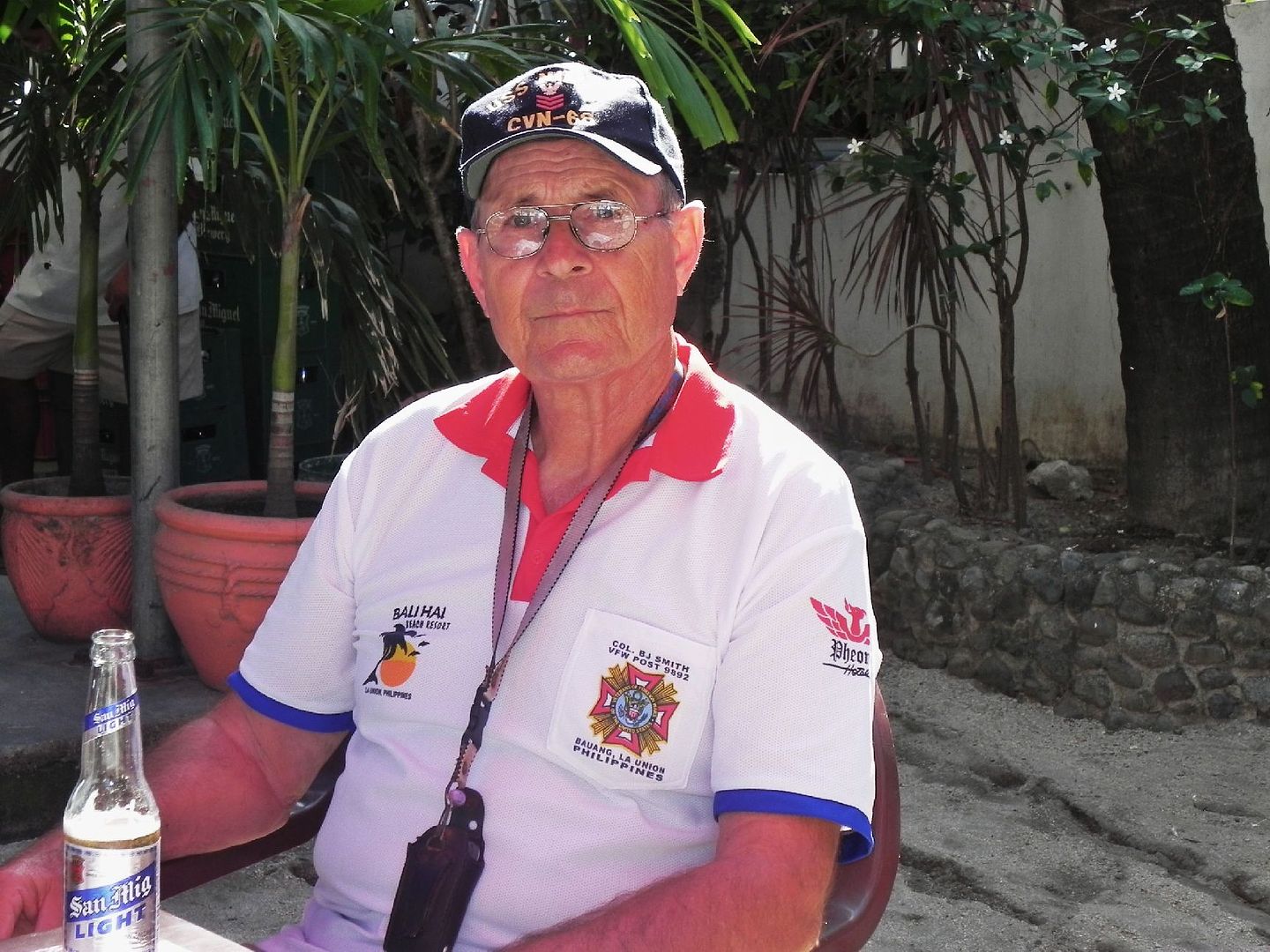
August 14, 2015 - "Japanese WWII Memorials and Markers in the Philippines," on-line forum by Karl-Wilhelm Welteke, US Navy Retired. Contains information & images for some peace monuments not yet shown on this web page. Photo shows Welteke at the "20th VFW 11447 Subic Bay Annual Beach Bash."




- Peace Pole in Samoa (Independent State of Samoa or American Samoa?). All information in email from 102-year old Marjorie Ewbank April 24, 2017: "One of the things that I could have told you about [yesterday] was [John's & my] trip to Samoa. During the conference that we attended, the mayor of the town (now I can't remember the name) arranged for the celebration and planting of the PEACE POLE. All the school children, the towns people & the 200 hundred conference people gathered in a circle around the edge of a very large field. At one point the mayor and a few of the notables stayed, planted the pole and had everyone repeat "May Peace Prevail on Earth" as we marched around the edge of the circle. The words were repeated in every language of the world and the march continued for hours. It was a blistering hot day and how we all managed to survive is a mystery. There were a few trees around the edge of the circle and some folks did stop to rest."
February 15, 1967 - Memorial to the Civilian Victims of the Japanese Occupation, War Memorial Park (Singapore). "One of Singapore's most famous heritage landmarks... Has also been affectionately described by some as resembling four giant chopsticks. Unseen to the eye, the remains of unidentified war victims are buried beneath the monument..."





2005 - "Let There Be Peace," Catholic High School (Singapore). Ten-foot monument by Romanian artist Alexandra Nechita [born 1985] call the "Petite Picasso." "In November 1999, 14-year old Alexandra was selected by the World Federation of UN Associations (WFUNA) to lead a Global Arts Initiative involving more than 100 nations. In 2005, she unveiled her United Nations Peace Monument for Asia in Singapore [3rd image]." See John Lennon Peace Monument, Liverpool (England), October 2010.



Date? - Japanese Peace Memorial, Mt Austin (1353 feet), Solomon Peace Memorial Park, Guadalcanal Island (Solomon Islands). Has view of Honiara, Iron Bottom Sound & the Florida Islands. Constructed by Japanese government.



1961 - Thai Bell, John Wilson District Building, Federal Triangle, Pennsylvania Avenue at 14th Street, Washington, DC (USA). Presented to the people of Washington by the people of sister city Bangkok (Thailand).

Date? - Japanese Peace Park, Kanchanaburi (Thailand). Near the Kwai River. Includes peace pole. "Visitors come from all over the world to see the famous Bridge On the River Kwai. Perhaps they also visit Hellfire Pass about 30km away. Most make time to visit the war cemetery dedicated to the fallen soldiers of the ANZACS armies. But few notice the little garden tucked away behind ancient gates that is home to a sadly neglected monument erected by the Japanese army in 1944. On my second trip to Kanchanaburi I stumbled upon the park & while walking around the monument I came upon this peace pole that has been a more recent addition. Was glad to see a peace pole in a place that was the scene of so much of the war."

Date? - Peace Cafe, Kanchanaburi (Thailand).

Date? - Suan Santi Phap / Peace Park, Ratchawitee Road, Bangkok (Thailand). Close to Victory Monument. Text of sign: "This area is about 20 Rais & was the original location of the government housing estate, where a rather small public park for people to relax & exercise. It was built on later time by Bangkok metropolitan administration. The park has been named Suan Santi Phap in order to commemorate the final day of the World War II on the 16th August 1945, which is regarded as the peaceful day of mankind. The letter type of the park name is Buddha that Bhikku’s handwriting. In the park there is a sculpture of a bird holding a bunch of olive in its beak, which means the peace of the world. Its sculptural style comes from the work of a Spanish artist Picasso. The park has a natural wood garden atmosphere with most of perennial trees. There are three ponds in the centre of the park surrounded by footpaths & roads for jogging. [sic]"

1993 - Thai Labour Museum, 503/20 Nikommakkasan Road, Ratchatewi, Bangkok (Thailand). See Video. "First museum in Thailand to tell the story of working-class people. Divided into 6 rooms which demonstrate the development of Thai labor from the serf (slave) period up until the present day. There are murals depicting the evolution of working conditions and many displays of actual machinery used in these times. Admission is free, but visitors are requested to call in advance."


April 8, 1994 - Thai-Lao Friendship Bridge, Mekong River (Thailand & Laos). Connects Nong Khai (Thailand) & Vientiane (Laos). "With a length of 1,170 m, the bridge has two 3.5 m-wide road lanes, two 1.5 m-wide footpaths and a single metre gauge railway line in the middle, straddling the narrow central reservation."
April 2005 - "Building Commuinities of Peace for All," Chiang Mei (Thailand). By Artists Ugatiahi Collective.

February 23, 2006 - Pattaya Peace Park, Queen Sirikit Park, Pratumnak Hill, Pattaya (Thailand). Contains Rotary Peace Monument. Pattaya is "First Rotary Peace City in Thailand." Click here for series of similar Rotary monuments in various countries, all using same design from Wagga Wagga, New South Wales (Australia).


January 2009 - Jade Buddha for Universal Peace," Great Stupa of Universal Compassion, Sanhurst Town Road, Myers Flat, Victoria (Australia). Carved by Jade Thongtavee Company in Thailand from a rare boulder of translucent jade ("Polar Pride") which was discovered in Canada in 2000. "Perhaps the largest and most beautiful Buddha carved from gemstone quality jade. Including lotus and throne, over 3.5 metres (11.4 feet) tall... Inspired by the most famous Buddha in the world inside the Mahabodhi Stupa in Bodh Gaya (India)." On world tour 2009-2010. Image made in Huntington Beach, California (USA), in October 2010.




Date? - Luang Pu Memorial Sphere, Songphinong (Thailand). "Another symbol, very familiar to meditators, that of a giant sphere. Beyond the sphere lies the memorial hall [pyramid], though it was not yet complete... A major site associated with Bhikkhu Sodh Candasaro, widely known as the great meditation master, Luang Phor Wat Paknam (or Luang Pu Wat Paknam), who rediscovered the Dhammakaya method of meditation."
2012 - Office building, Pathum Thani Province (Thailand). Office Space: 80,000 sq.m., Height: 95 meters.
Future - P-P Peace Park, where? (Thailand)."The sculptural landmark of The P-P Peace Park, characterful presence on the newly created public park represents the symbol of peace, and love that concerned in the context of climate changes and global warming. The dynamic form responds to the uniqueness of its location, adjacent to the waterfront through creating tranquility and intimacy. From the surrounding area, this proposed project is perceived as a sculptural landmark of the region." Monument designed by Khiensak Seangklieng.

Date? - Friendship Gate, Pingxiang (China) & Langson (Vietnam). Ancient gate on border between China & Vietnam. "On February 23, 2009, a ceremony marking the completion of land border demarcation between China and Vietnam was held at the Youyiguan border gate in Pingxiang City in South China's Guangxi Zhuang Autonomous Region."

1593 - Friendship Bridge, Hòa An (Vietnam). "Links the old Chinese and Japanese sides of the canal." "During the period of the China trade (16th-17th century), the town was called Hai Pho (Seaside Town) in Vietnamese. Originally, Hai Pho was a divided town with the Japanese settlement across the "Japanese Bridge." The bridge (Chùa cau) is a unique covered structure built by the Japanese, the only known covered bridge with a Buddhist pagoda attached to one side."


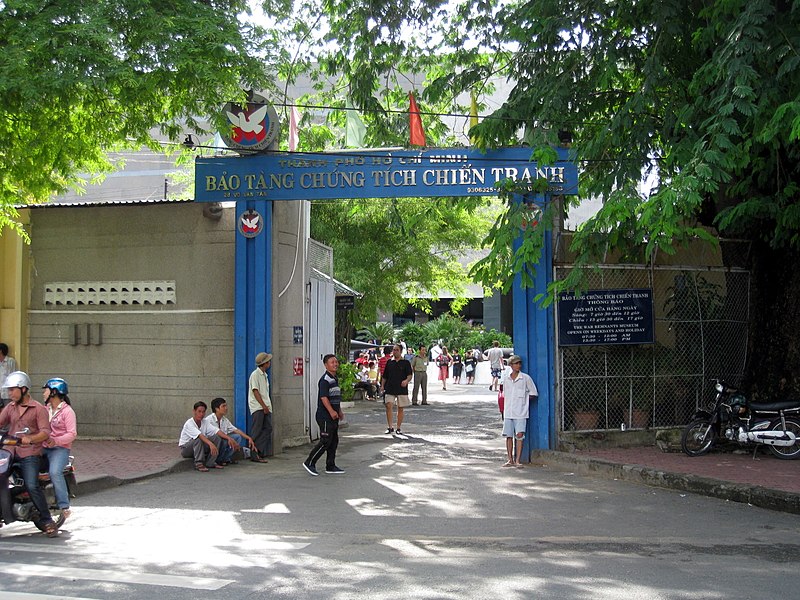


1975 - Bao tang chung tích chien tranh / War Remnants Museum, 28 Vo Van Tan, District 3, Ho Chi Minh City/Saigon (Vietnam). Former premises of the US Information Service (USIS). Formerly called the Museum of American War Crimes. Primarily contains exhibits relating to the American phase of the Vietnam War. A major tourist attraction.
Member of International Network of Museums for Peace (INMP).

Date? - John McCain Monument, Truc Bach Lake, Hanoi (Vietnam). Inscription: "Here on 26 October 1967 at Truc Bach Lake in the capital city of Ha Noi, John Sidney McCain was shot out of the sky in his A4 aircraft by local citizens' militia defending Yen Phu. There were 10 other planes shot down on the same day." /// "The monument is in the rough shape of a plane, or the severed head of a crucifix, with the kneeling figure of John McCain at its center. Head bowed in penitence, knees buckling, eyes hooded in shame, he looks like a man quite capable of saying, even some thirty years later, "I am a war criminal; I bombed innocent women and children" – as he did in an interview with Mike Wallace on Sixty Minutes in 1997." /// "McCain is misspelled. It's odd that there's such a big monument here, while at the War Remnants Museum in Saigon he's not mentioned (as far as a I know). If he were to be mentioned, I suspect the plaque would read, 'Our honored prisoner from America broke both of his arms learning how to use chopsticks.'"


1995 - Vietnamese-American Peace Park, 30 miles north of Hanoi (Vietnam). A project of the Madison Quakers. Image shows Dove Mound, inspired by the Native American mound at the Highground Veterans Memorial Park, Neillsville,Wisconsin (USA).


1998 - My Lai Peace Park, My Lai (Vietnam). A project of the Madison Quakers. Site of the My Lai Massacre by a unit of the US Army on March 16, 1968, of 347–504 unarmed citizens, all of whom were civilians and a majority of whom were women, children (including babies) and elderly people.



April 25, 2009 - Vietnamese Boat People Monument, Westminster, Orange County, California (USA). Memorializes the tens of thousands who died in the high seas as they tried to escape communist Vietnam after the Fall of Saigon in April 1975. Built by Cam Ai Tran and Hap Tu Thai who escaped from Vietnam in 1979 by a boat which capcized, forcing them to swim ashore near Hai Nam Island in the South China Sea.






















